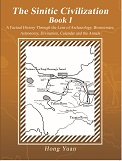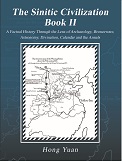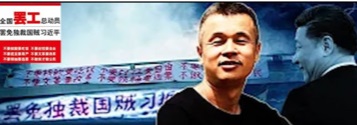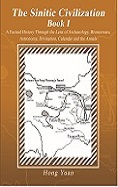
Sinitic Civilization-Book 1
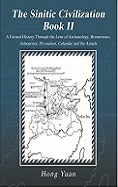
Sinitic Civilization-Book 2
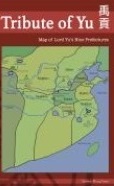
Tribute of Yu

Heavenly Questions
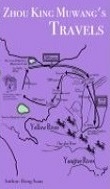
Zhou King Muwang's Travels
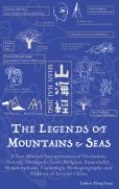
The Legends of Mountains & Seas
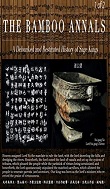
The Bamboo Annals - Book 1
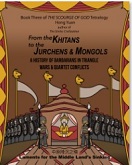
The Scourge-of-God-Tetralogy:
From the Khitans to the Jurchens & Mongols: A History of Barbarians in Triangle Wars and Quartet Conflicts
(available at iUniverse;
Google;
Amazon;
B&N)
|
|
MING DYNASTY
Expulsion of the Mongols
Ming Emperor Hongwu (Ming Taizu, Zhu Yuanzhang, r. 1368-1398)
Ming Emperor Jianwen (Ming Huidi, Zhu Yunwen, r. 1399-1402)
Ming Emperor Yongle (Ming Chengzu, Zhu Di, r. 1403-1424)
Ming Emperor Hongxi (Ming Renzong, Zhu Gaochi, r. 1425-1425)
Ming Emperor Xuande (Ming Xuanzong, Zhu Zanji, r. 1426-1435)
Ming Emperor Zhengtong (Ming Yingzong, Zhu Qizhen, r. 1436-1449)
|
Zheng Heh's 7 Naval Expeditions
Prof Wei Chu-Hsien & "China and America"
Japanese Piracy, Shogunate Tallies, Korea & Taiwan Island
Jesuit Visits To Ming China
Ming China's War With Portuguese
Ming China's War With Dutch
|
Zheng Heh's 7 Naval Expeditions
Between A.D. 1405 and 1433, Yongle or Yung-Lo Emperor (Ming Chengzu, i.e., Zhu Di) and Ming Emperor Xuande (Ming Xuanzong, i.e., Zhu Zanji) dispatched seven great naval expeditions into the Indian Ocean. The Chinese history recorded that the largest ships, the 'bao chuan' or "treasure ships", were 440 feet long and possessed nine masts, bigger than the British warships that invaded China later. Recent revelation speculate that Zheng Heh might have already visited the Cape of Good Hope, Australia and the New World before the Europeans did and that the later Europeans had conducted seafaring trips on basis of world maps drawn by Chinese in the first place. Zheng Heh's voyage was earlier than Columbus's America sailing by 87 years, earlier than Vasco da Gama's sailing to India by 93 years, and earlier than Fernando Magellan's sailing to Philippines by 116 years.
Gavin Menzies, a retired British submarine commander, said that "Zheng He was the first man completing the first circumnavigation of the globe one century earlier than Ferdinand Magellan during 1519-1522" and that "many academics not just in China but also on the West Coast of the U.S. believe he found North America and Australia during a two-year odyssey which began in 1421." Mr Menzies told BBC News Online: "It's virtually impossible to still argue that Columbus discovered America, that Cook found Australia or that Magellan was the first to circumnavigate the world. You have to be a crank nowadays to believe that." Mr Menzies published his book 1421: The Year China Discovered The World on November 4th 2002. (See
http://news.bbc.co.uk/2/hi/science/nature/2349929.stm.
)
However, the sea routes between Europe and India never needed to be re-discovered. The Arabians had sailed along the eastern coast of Africa for hundreds of years, and they had visited India, Malacca, Vietnam, and China all along. In the time of Han Emperor Huandi (reign A.D. 147-167), there were recorded visits from the west, arriving by sea, via the coasts of Rinan Commandary (today's central Vietnam). Indian envoys were received at the Han Court in A.D. 159 and in A.D. 161, and an emissary from Daqin (Da Qin), i.e., Rome, arrived in A.D. 166. During China's Three Kingdoms time period, another Roman envoy arrived in Wu Dynasty, and when he left China, he requested with Sun Quan for a dozen pigmy people to be sent to Roman Emperor as a gift. (Sun Quan caught pigmy people somewhere south of the Huai River.)
"History of Jinn Dynasties", by Tang Dynasty's Fang Xuanling, recorded that a Lijian or Roman emissary came to Western Jinn court during the Taikang Era (AD 280-289) of Emperor Jinn Wudi (reign 265-290 AD).
During A.D. 399-414, one Chinese monk, Fa Shien, had returned to China via the sea route, after spending years studying Buddhism in India. Tang Dynasty had recorded that some East Roman emissary had visited China via the sea route.
The "overseas trip permit" system, first adopted by Song Emperor Taizong in A.D. 989, was enforced throughout the dynastic reign.
Zhao Rushi's A.D. 1225 book "Zhu [various] Fan [foreign countries] Zhi [records]" mentioned that the Chinese had travelled overseas often and established the colonies overseas; that murderer of some Chinese merchant at Zhancheng [southern Vietnam?, Saigon of Vietnam] was caught & executed; and that King of San-fo-qi wrote to China in the Chinese language.
Yan Qinghuang cited "Song Shi" [The History of Song Dynasty] in pointing out that the overseas Chinese had become leaders in the alien lands, including Java [Mao Xu] and Japan [Zhu Rencong, Zhou Wende, Zhou Wenyi, Chen Wenyou, Sun Zhong & Li Chong].
The Chinese fled the coast in hordes after the Mongol invasion and occupation of southern China.
Shen Jingzhi, per Yan Qinghuang's citation of Chen Zhutong's writing, fled to Zhancheng to seek relief with the king for fighting the Mongols.
The Mongols, after subjugating southern China, expanded ("shi [trade] po [moor] si [magistrate]") system to have three additional ports opened, i.e., Shanghai, Qingyuan & Ganpu [Haiyan of Zhejiang].
Marco Polo certainly returned to Europe via the merchants' fleet.
When Ming Emperor Zhu Yuanzhang captured Peking from the Mongols, there was a Roman emissary stranded there. Emperor Zhu Yuanzhang made special arrangement for the Roman to return to his country via a merchant fleet.
During the Mongol reign, Zhou Daguan was sent to Zhenla [Chang-la] to subdue the king, and observed numerous overseas Chinese who interbred with the locals. In A.D. 1349, Wang[1] Dayuan wrote a book ["dao yi zhi lüe"] about his visits to various southeastern Asian ports, with description of the Chinese settlements which were later confirmed by Ma Huan in A.D. 1413.
Ma Huan stated in "ying ya sheng lan" that at Duban of Java, there were 1000 households who were originally from today's Guangdong Province.
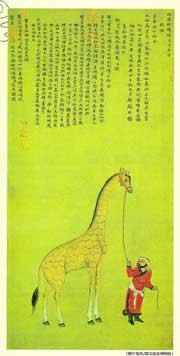 Most of the records of the expeditions were destroyed by the Ming Dynasty officials. There was no definite explanation as to why Ming Dynasty started these explorations and why it suddenly stopped it. There had been a saying that the Yongle Emperor decided to send expeditions to the South Seas in search of his nephew emperor because he heard a rumor that the deposed emperor, whose body was never found in the Nanking's palace, might have fled to Southeast Asia as a monk. In this webmaster's opinion, the rumor factor could be one of many factors, while the other factor would be Ming China's new policy of seeking vassalage to rein in the neighbors, which was best exemplified in its attempts to have Japan acknowledge the suzerainty in A.D. 1371.
Taiwan scholars, using the Ming Dynasty court portrait of African giraffe, speculated that the Ming emperor ordered that Zheng Heh command a contingent to Africa in A.D. 1414 in search of an ancient noble animal called 'qi lin' (i.e., Giraffe).
Scholar Luo Xianglin provided a splendid explanation as to the cause of Ming China's launching the seafaring trips to the "Western Seas": Ming Emperor Chengzu, after hearing of the threat of invasion from Central Asia, intended to contain Timurlane by seeking an alliance with the Arab nations under the pretext of searching for the rumored Emperor Huidi in Southeast Asia.
Ming Emperor Taizu's emissary to Timur, i.e., Fu An, was detained in Central Asia.
Timur was recorded to have made some special arrangement for the Chinese emissary to inspect his domain so that China would be daunted by his military might.
Upon hearing of the war between Ming Emperor Huidi and Ming Emperor Chengzu, Timur organized an army of 200,000 for an attempted invasion of China.
Ming Emperor Chengzu ordered that garrison general Song Sheng prepare for defence in the desert area in today's eastern Chinese Turkestan while Zheng Heh be dispatched to the Persian Gulf, Red Sea and Indian Ocean.
Most of the records of the expeditions were destroyed by the Ming Dynasty officials. There was no definite explanation as to why Ming Dynasty started these explorations and why it suddenly stopped it. There had been a saying that the Yongle Emperor decided to send expeditions to the South Seas in search of his nephew emperor because he heard a rumor that the deposed emperor, whose body was never found in the Nanking's palace, might have fled to Southeast Asia as a monk. In this webmaster's opinion, the rumor factor could be one of many factors, while the other factor would be Ming China's new policy of seeking vassalage to rein in the neighbors, which was best exemplified in its attempts to have Japan acknowledge the suzerainty in A.D. 1371.
Taiwan scholars, using the Ming Dynasty court portrait of African giraffe, speculated that the Ming emperor ordered that Zheng Heh command a contingent to Africa in A.D. 1414 in search of an ancient noble animal called 'qi lin' (i.e., Giraffe).
Scholar Luo Xianglin provided a splendid explanation as to the cause of Ming China's launching the seafaring trips to the "Western Seas": Ming Emperor Chengzu, after hearing of the threat of invasion from Central Asia, intended to contain Timurlane by seeking an alliance with the Arab nations under the pretext of searching for the rumored Emperor Huidi in Southeast Asia.
Ming Emperor Taizu's emissary to Timur, i.e., Fu An, was detained in Central Asia.
Timur was recorded to have made some special arrangement for the Chinese emissary to inspect his domain so that China would be daunted by his military might.
Upon hearing of the war between Ming Emperor Huidi and Ming Emperor Chengzu, Timur organized an army of 200,000 for an attempted invasion of China.
Ming Emperor Chengzu ordered that garrison general Song Sheng prepare for defence in the desert area in today's eastern Chinese Turkestan while Zheng Heh be dispatched to the Persian Gulf, Red Sea and Indian Ocean.
Scholar Yan Qinghuang, however, in pointing out the conflicts between Ming China's sea ban policy and its overseas expedition, stated that Ming China's ultimate aim in both actions was the same, i.e., the state monopoly of foreign trade. Hence, the economic stimulus was the ultimate driving force behind Zheng Heh's seven voyages, with the essence exhibiting itself by the very character "treasure" that was inscribed in the ships' name.
Emperor Yongle had merely attempted to expand on the trade without breaking the "sea ban" policy.
The sudden ending of the expeditions could be related to the loss of dozens of ships during the last voyage. It was said that only a dozen ships, out of a total of 50-60, had survived a hurricane. The Prevalent explanation attributed the ending of the voyages to the power struggles between the eunuchs and the Confucian scholars as well as the newly emerging threats from the remnant Mongol tribes on the Gobi. Once the Chinese fleet left the seas, the Japanese pirates began to sail along the coasts of China and Korea.
Who Was Zheng4 He2
There was speculation about Zheng Heh's Centra Asia origin.
While 'Ma' surname had long existed in China before the spread of Islam, Scholar Luo Xianglin did cite the records of the name 'Ma-ha-zi' among Zheng Heh's father and grandfather as proof that their ancestors were devout Muslims. 'Ma-ha-zi' was a title for those Muslims who successfully paid pilgrimage to Mecca in the ancient times.
There was, however, no record to ascertain the Zheng Heh ancestry in the official chronicles.
A Japanese scholar, Uesugi Senon, cited a family lineage book discovered in 1983 purportedly inside of the "nationalities palace museum" next to the Forbidden City to prove that Zheng Heh was a descendant of a Mongol prince [king] who had relocated from possibly Central Asia.
While still a boy of ten years old, Zheng Heh (Zheng He), originally surnamed 'Ma' (a popular Muslim name in northwest China that was thought to have been appropriated from the first syllable of Mohammed), was taken over by the Ming armies which campaigned against the Mongol remnants in today's Yunnan Province, Southwest China.
Ming General Fu Youde, Lan Yue and Mu Ying led the expedition to Southwestern China in A.D. 1381, eliminated the last Mongol strongholds, and imprisoned and castrated lots of enemy troops and civilians, including Zheng Heh. The Ming dynasty records extensively carried passages on castration in Southwest China. They delivered Zheng Heh to the King of Yan, Zhu Di. After Zhu Di deposed his nephew emperor, Zheng Heh was conferred the post of "nei guan jian" eunuch in A.D. 1404. Zhu Di changed Zheng Heh's last name to Zheng from Ma. The same Japanese scholar had cited Zheng Heh's family descendant in stating that it was due to Zheng Heh's contribution to a war fought around the Zhen-cun Village that he was conferred the said surname.
Zheng4 He2's Trip To the Western Seas
Under the nodding approval of a minister by the name of Yuan Zhongche, Emperor Chengzu (Zhu Di) ordered that Zheng Heh lead a fleet to the so-called 'Xi Yang', i.e., the Western Seas or the Indian Sea, beyond the Sumatra Island of Indonesia. On July 11th [June per lunar calendar] of A.D. 1405, Zheng Heh departed the port of Liujiaxiang of Suzhou-fu (Liuhekou, Taicang County, Jiangsu Province) with a fleet of 208 ships.
Per Luo Xianglin, ships, with 62 largest having a length of 44 Chinese yards and a width of 18 yards and the rest 37 by 15 Chinese yards, were built at Liujiahe area.
The destination included Zhancheng [Saigon of Vietnam], Zhenla [Changla, i.e., Cambodia], Thailand, Java [Jakarta], Bo-ni [Bo-luo-zhou], Malacca, Jiu-gang [Peleambang/Pelembang of Sumatra], Bang-ge-la [Bengal], Ke-zhi [southeast India], Gu-li [Bombay], Xi-lan [Ceylon], Zu-fa-er [south Arabian coast], A-dan [Aden], Hu-lu-mo-si [Orimuz, Hormuz], Tian-fang [Mecca], and Mu-gu-du-xu [Mogadishu].
Details about Zheng Heh could be seen below:
Bi Quanzhong's Citation Of the Ancient Texts
Bi Quanzhong wrote about his speculation at
epochtimes.com/gb/2/4/17/n231865.htm
What Bi Quanzhong did was to dig through the corroborating sources for explanation as to the termination of Zheng Heh's expeditions. As stated by Bi Quanzhong, Ming novelist Feng Menglong (1574-1646), in his book Zhi Rang (i.e., the brain trust), wrote that Ming Emperor Yingzong (Zhu Qizhen, r. 1436-1449 & r. 1457-1464) had a hobby for collecting treasures. The Eunuchs suggested to Yingzong that Emperor Xuanzong (Zhu Zhanji, r. 1426-1435), in A.D. 1430, dispatched Zheng Heh to the Western Seas and obtained innumerable treasures. Emperor Yingzong asked the eunuchs to go to the ministry of bing bu (i.e., defence or army) in search of the sea maps. A minister at bing bu, Liu Daxia (bingbu shilang), hearing of the eunuchs' search, deliberately hid the maps from the eunuchs. When bingbu shangshu Xiang Zhong asked about those navigation maps, Liu Daxia told Xiang Zhong that the expeditions to the Western Seas had cost hundreds of thousands Chinese ounces of silver and incurred a civilian/navy loss of lives in dozens of thousands. Xiang Zhong agreed with Liu Daxia and burnt the sea maps.
Bi Quanzhong also cited Zhu Yunming's book Qian Wen Ji in regards to the last trip by Zheng Heh. Bi Quanzhong claimed that the civilian/navy loss of lives in dozens of thousands in A.D. 1430 might not be correct and that some of those stray ships could have arrived in the American Continent. Bi Quanzhong cited Ying (ocean) Ya (edge) Sheng (beautiful) Lan (view) & Xing (star) Cha (raft) Sheng (beautiful) Lan (view) (two books written by Zheng Heh's officers, Ma Huan / Fei Xin) in stating that it was the Ming navy's policy to dispatch some sub-contingent fleets to different countries during their sea voyages.
(humanities.ualberta.ca/history111/weeksept22/Starraft.html translated 'Xing Cha Sheng Lan' into Triumphant Tour of the Star Raft where the character 'sheng' did not follow the ancient Chinese interpretation as meaning "the most beautiful sight".)
The Ba-la-xi Story in the Official Chronicle, "Ming Shi"
There was a record of the Ba-la-xi story in the official chronicle, "Ming Shi".
Bi Quanzhong also cited the same account in another book, Ye Ji (i.e., records of the wild stories) by Zhu Yunming (1461-1527). The story goes like this: in A.D. 1511, Sha-di-bai, an emissary from the country of Ba-la-xi, arrived in Canton for paying pilgrimage to the Chinese emperor. Sha-di-bai brought along a royal letter with gold-leaf. Sha-di-bai said that he was from the South Seas; he had travelled on the seas for four and a half years before he suffered a shipwreck after being blown to the Xi-lan (west Lan or mutation of Ceylon) sea; he stayed on a life-boat for eight days and arrived at the country of Jiling-guo where he stayed for 11 months; he then continued on to another country where he stayed for 8 months; he then travelled via land to ancient Thailand within 26 days where the Thai king offered him supplies and four women; he then stayed in Thailand for 4 years; and then he rode on a foreigner's ship to Canton in May of 1511.
Bi Quanzhong speculated that Sha-di-bai's Ba-la-xi must be situated in South America, somewhere near Brazil, that Zheng Heh's navy officers might have visited South America and propagated the news about China and that the Ba-la-xi king had sent an emissary to China in exchange of good-will.
This webmaster's opinion was that Bi Quanzhong just did a convenient speculation by linking Ba-la-xi to Ba-xi [Brazil], a country that would not have obtained its current name till after the Latin American independence wars. Ba-la-xi could be somewhere in the Polynesian Islands or the territories near Australia.
(This is a common soundex extrapolation by the Chinese scholars.)
 The Scourges-of-God Tetralogy
would be divided into four volumes covering
Hsiung-nu (Huns), Hsien-pi (Xianbei), Tavghach
(Tuoba), Juan-juan (Ruruans), Avars, Tu-chueh (Turks), Uygurs (Huihe), Khitans, Kirghiz, Tibetans, Tanguts, Jurchens, Mongols and Manchus and
southern barbarians.
Book I of the tetralogy would extract the contents on the Huns from
The Sinitic Civilization-Book II,
which rectified the Han dynasty founder-emperor's war with the Huns on mount Baideng-shan to A.D. 201 in observance of the Qin-Han dynasties' Zhuanxu-li calendar.
Book II of the Tetralogy would cover the Turks and Uygurs.
And
Book IV would be about the Manchu conquest of China.
The Scourges-of-God Tetralogy
would be divided into four volumes covering
Hsiung-nu (Huns), Hsien-pi (Xianbei), Tavghach
(Tuoba), Juan-juan (Ruruans), Avars, Tu-chueh (Turks), Uygurs (Huihe), Khitans, Kirghiz, Tibetans, Tanguts, Jurchens, Mongols and Manchus and
southern barbarians.
Book I of the tetralogy would extract the contents on the Huns from
The Sinitic Civilization-Book II,
which rectified the Han dynasty founder-emperor's war with the Huns on mount Baideng-shan to A.D. 201 in observance of the Qin-Han dynasties' Zhuanxu-li calendar.
Book II of the Tetralogy would cover the Turks and Uygurs.
And
Book IV would be about the Manchu conquest of China.
From the Khitans to the Jurchens & Mongols: A History of Barbarians in Triangle Wars and Quartet Conflicts
, i.e., Book III of
the Scourge-of-God-Tetralogy,
focused on the Khitans, Jurchens and Mongols, as well as provided the annalistic history on the Sui and Tang dynasties, the
Five Dynasties & Ten Kingdoms, and the two Soong dynasties.
Similar to this webmaster' trailblazing work in rectifying the Han dynasty founder-emperor's war with the Huns to 201 B.C. in The Sinitic Civilization - Book II,
this Book III of the Scourge-of-God-Tetralogy
collated
the missing one-year history of the Mongols' Central Asia campaigns and restituted the
unheard-of Mongol campaign in North Africa.
|
The Scourges of God: A Debunked History of the Barbarians" - available at iUniverse|Google|Amazon|B&N
From the Khitans to the Jurchens & Mongols: A History of Barbarians in Triangle Wars and Quartet Conflicts
(The Barbarians' Tetralogy - Book III)
Epigraph,
Preface,
Introduction,
Table of Contents,
Afterword,
Bibliography,
References,
Index
|
|
Table of Contents
(From the Khitans to the Jurchens & Mongols: A History of Barbarians in Triangle Wars and Quartet Conflicts)
Chapter XLI: The Red Turbans' Rebellion Against the Mongols.........................................................701
Chapter XLII: The Ming Dynasty vs. the Mongols ............................................................................720
|
|
Prof Wei Chu-Hsien & "China and America"
|
|
|
|
|
|
|
Sovereigns & Thearchs;
Xia-Shang-Zhou dynasties;
Zhou dynasty's vassalage lords;
Lu Principality lords;
Han dynasty's reign years
(Sexagenary year conversion table-2698B.C.-A.D.2018; 247B.C.-A.D.85)
|
|
The Sinitic Civilization - Book I is
available now at
iUniverse,
Barnes & Noble,
Amazon,
Google Play|Books
and
Nook.
The Sinitic Civilization - Book II is available at
iUniverse,
Amazon and Barnes & Noble.
Check out the 2nd edition preface that had an overview of the epact adjustment of the quarter remainder calendars of the Qin and Han dynasties, and the 3rd edition introductory that had an overview of Sinitic China's divinatory history of 8000 years.
The 2nd edition, which realigned the Han dynasty's reign years strictly observing the Zhuanxu-li calendar of October of a prior lunar year to September of the following lunar year, also cleared this webmaster's blind spot on the authenticity of the Qinghua University's Xi Nian bamboo slips as far as Zhou King Xiewang's 21 years of co-existence with Zhou King Pingwang was concerned, a handicap due to sticking to Wang Guowei's Gu Ben Bamboo Annals and ignoring the records in Kong Yingda's Zheng Yi.
Stayed tuned for Book III that is to cover the years of A.D. 86-1279, i.e., the Mongol conquest of China, that caused a loss of 80% of China's population and broke the Sinitic nation's spine.
Preview of annalistic histories of the Sui and Tang dynasties, the
Five Dynasties, and the two Soong dynasties
could be seen in
From the Khitans to the Jurchens & Mongols: A History of Barbarians in Triangle Wars and Quartet Conflicts
(The Barbarians' Tetralogy - Book III: available at iUniverse;
Google;
Amazon;
B&N).
(A final update of the civilization series, that is scheduled for October 2022, would put back the table of the Lu Principality ruling lords' reign years, that was inadvertently dropped from Book I during the 2nd update.)
|
|
Book II - Table of Contents:
Chapter XXXI: The Han Dynasty's Chronological History p.367
Invasion into the Korean Peninsula p.391
Chapter XXXVI: The Western Expedition, The Kunlun Mountain & Shan Hai Jing p.489
Han Emperor Wudi Seeking Elixir from the Immortals on the Kunlun Mountain p.491
Credible Geography Book on the Mountains Possibly Expanded to Include the Legendary Kunlun Mountain p.493
Unearthly Things in the Mountains' Component of The Legends of Mountains & Seas p.501
The Divination Nature and Age of the Seas' Component of The Legends of Mountains & Seas p.506
Chapter XXXVII: The Legends of Mountains & Seas (Shan Hai Jing) & The Ancient Divination p.520
The Divination Nature and Age of the Seas' Component in The Legends of Mountains & Seas - Debunking the Theory of "Asiatic Fathers of America"
Shan Hai Jing, in the "within-seas" and "great [overseas] wilderness sections, contained three interesting matters, namely, an alternative history of the thearchs that differed from the five thearchs' lineage in Shi-ji and Da-dai Li-ji; the wind gods that had the trace from the oracle bones of the Shang dynasty time period; and the divination topics such as Xia King Qi3's bestriding the flying dragons to rise to the heaven.
It could be speculated that the mythic writings in the seas' components of Shan Hai Jing were the result of the emperor's seeking the panacea or elixir. Note that dozens of diplomatic missions were sent to the west, with an apparent side order for ascertaining the locality of the legendary Kunlun Mountain where the immortals lived. If the mountain sections of Shan Hai Jing was written before Zhang Qian's trip to the west, the writer(s) of the sea sections, possibly following the "mountains" component of Shan Hai Jing (i.e., The Legends of the Mountains and Seas), expanded the writings on Kunlun, the Queen Mother (old woman), and the origin of the Yellow River, etc., into the chapters known as "The Book on the Within-Seas", "The Book on the Inner Seas", "The Book on the Outer Seas", and "The Book on the [Overseas] Wilderness" --a highly speculative book that talked about the panacea, the immortals, the various gods, as well as the ancestral human gods like Tai-hao the Senior (i.e., wind or phoenix-surnamed ancestor), Huang-di the Yellow Thearch, Yan-di the Fiery Thearch, Shao-hao the Junior (i.e., Ji3-surnamed ancestor), Overlord Zhuanxu, Overlord Di-ku, Overlord Yao, Overlord Shun, the founder-kings of the Xia, Shang and Zhou dynasties, as well as mythical figures like Lord Di-jun, et al. (Depending on the coverage of the overlords in different sections of the sea components of Shan Hai Jing, there were unfounded claims among the modern historians that those particular sections of the book were from some particular past dynasties like Xia or Shang.)
The mountain part of Shan Hai Jing, while having its geographical layout built on top of Yu Gong (Lord Yu's Tributes), was not written as a geography book but with possibly two purposes, namely, a proclivity for expounding sacrifice and primitive prophecy conducted on the mountains and hills, and a description of the treasures and wealth of the mountains. The second purpose was similar to the forgery Han dynasty political economy book Guan Zi --which, like the "Salt & Iron Debate" of the Han dynasty, contained chapters on the mountains such as 'Shan-guo Gui' (mountain nations' track, i.e., finance management), Shan Quan Shu (mountain's whimsical mathematical strategy), and Shan Zhi Shu (mountain's utmost mathematical strategy), containing similar description of the treasures and wealth of the mountains. The writings sharing the common geographical data or similar raw materials with the mountain part of Shan Hai Jing included Qu Yuan's poems like Tian Wen (asking heaven); Mu-tian-zi Zhuan (Zhou King Muwang's travelogue); and Lv-shi Chun-qiu.
(The four eastern mountain ranges were mistakenly appropriated to North America by Henriette Mertz in the 1958 book Pale Ink, which was the author's overzealous pursuit of the topic of Asiatic fathers of the Amerindians. Henriette Mertz also had the wild imagination about the deep gully beyond the east sea, stating that it was the Grand Canyon of Arizona. Henriette Mertz, who had erroneously appropriated the mountains and valleys in Shan Hai Jing to North America, had some validity as to the link of monk Hui-shen to Quetzalcoatl.)
In contrast, the seas or overseas' components of Shan Hai Jing transcribed the unearthly animals, human-faced animal gods and strange-looking people in the mountain part of Shan Hai Jing into the names of countries or tribes as seen in Lv-shi Chun-qiu and Han dynasty book Huai Nan Zi, exhibiting the seas or overseas' components to be later than the mountain part. The seas or overseas' components could be further separated into two groups, namely, the "inner seas" and the "outer seas" sections that were compiled by Liu Xin of the Han dynasty and the "within-seas" and the "overseas wilderness" sections that were collected by Guo Pu of the Jinn dynasty, with the former two sections possibly synchronizing with the Han empire's military expansion, and the latter two sections sharing similar contents seen in the divinatory books Lian-shan Yi and Gui-cang Yi, including the Wangjiatai excavated divination texts of the 3rd century B.C. and possible materials from the Ji-zhong tomb excavation materials that were possibly a few decades earlier than the Wangjiatai texts.
Gui-cang Yi, like what the seas' component of Shan Hai Jing did in extensively copycatting Qu Yuan's and the other Chu Principality poems, had taken some of the poems' concepts as part of the divination texts, such as the "Feng-xue" (wind cave) in poem Bei Hui-feng [feeling sad about the percolating wind], and the "Yun-zhong[-jun]" (god in the cloud) and "Dong-jun" (eastern god) deities in poem Jiu Ge (nine songs), for example. While the divination in the seas or overseas' components of Shan Hai Jing could be relatively old, like the age of the Ji-zhong tomb and Wangjiatai excavation texts, the materials had apparently undergone revision through the Zhou, Qin, Han and Jinn dynasties, for about half millennium's time, as seen in Guo Pu's citation of eight polars in Qi3-shi1 of Gui-cang Yi to describe Xi-he2's reign in the empty mulberry land under the 'cang-cang' blue sky, as well as in the erroneous interpretation of Xia King Qi3's rising to the sky to be a high lord's guest as some theft of heavenly music, not an award from the high lord.
Simply speaking, the seas or overseas' components of Shan Hai Jing, though carrying the names of countries like in today's Korea, Chinese Turkestan and India, etc., were not about geography at all but divination. The divination materials, similar to those in Shi1 Fa, Gui-cang Yi, the Wangjiatai divination script, and the divination in Mu-tian-zi Zhuan, served the same augury purpose of the late Warring States time period, albeit possessing their separate freelance or freewheeling traits.
For example,
The one eyed son of Lord Shaohao in the "great northern wilderness" (Da Huang Bei Jing) section of Shan Hai Jing, like the one-hand and one-eye 'shen-mu-guo' (the deep eye socket) state in the "Northern Outer Seas" section, which was speculated to be the legendary one-eyed state Arimaspi that was described by Herodotus in Histories as located north of Scythia and east of Issedones and linked to the three-eye stone statutes of the Okunev Culture in Minusinsk, could have its source in some one-eye bird in the northern mountain range of Shan Hai Jing, and the one-eye and three-tail 'huan' foxlike animal on Mt. Yiwang-zhi-shan in the western mountain range.
Some conclusive statement could be made about the alternative divination methods other than Zhou Yi (i.e., Yi-jing). No matter Gui-cang Yi, Shi1 Fa, the Wangjiatai divination script, Mu-tian-zi Zhuan, or the mountain part and seas' part of Shan Hai Jing, they served the same augury purpose of the late Warring States time period, that possessed their separate freelance or freewheeling traits in the land of the Wei Principality in the case of the Ji-zhong tomb's type of Gui-cang Yi divination or in the land of the Chu Principality in the case of Shi1 Fa and Wangjiatai divination bamboo slips. The line augury objects in Shi1 Fa under the stalk numbers "eight", "five" and "four", with similarity to the augury topics in Zhou Yi and Gui-cang Yi's four trigram images or diagrams, could be said to be like what was seen as the primitive prophecy in the mountain part of Shan Hai Jing. Roughly, Shi1 Fa matched the primitive prophecy in the mountain part of Shan Hai Jing, while Gui-cang Yi, namely, the Wangjiatai scripts or the Ji-zhong tomb's type of Gui-cang Yi divination, matched the seas' part of Shan Hai Jing as far as divination was concerned.
For details, refer to
THE SINITIC CIVILATION Book II, available on Amazon,
B&N.





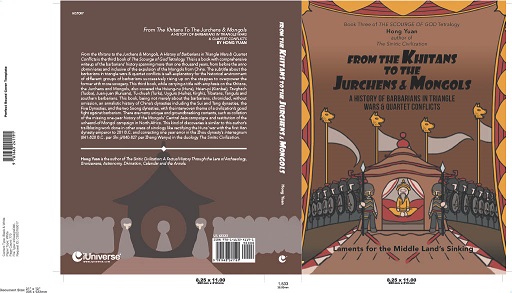
Epigraph|Preface|Introduction|T.O.C.|Afterword|Bibliography|References|Index
(available at iUniverse|Google|Amazon|B&N)
|
|
Dao-yi (Island Alien) Designation
Fu-Sang Statelet
|
|
|
|
|
|
|
Sovereigns & Thearchs;
Xia-Shang-Zhou dynasties;
Zhou dynasty's vassalage lords;
Lu Principality lords;
Han dynasty's reign years
(Sexagenary year conversion table-2698B.C.-A.D.2018; 247B.C.-A.D.85)
|
|
The Sinitic Civilization - Book I is
available now at
iUniverse,
Barnes & Noble,
Amazon,
Google Play|Books
and
Nook.
The Sinitic Civilization - Book II is available at
iUniverse,
Amazon and Barnes & Noble.
Check out the 2nd edition preface that had an overview of the epact adjustment of the quarter remainder calendars of the Qin and Han dynasties, and the 3rd edition introductory that had an overview of Sinitic China's divinatory history of 8000 years.
The 2nd edition, which realigned the Han dynasty's reign years strictly observing the Zhuanxu-li calendar of October of a prior lunar year to September of the following lunar year, also cleared this webmaster's blind spot on the authenticity of the Qinghua University's Xi Nian bamboo slips as far as Zhou King Xiewang's 21 years of co-existence with Zhou King Pingwang was concerned, a handicap due to sticking to Wang Guowei's Gu Ben Bamboo Annals and ignoring the records in Kong Yingda's Zheng Yi.
Stayed tuned for Book III that is to cover the years of A.D. 86-1279, i.e., the Mongol conquest of China, that caused a loss of 80% of China's population and broke the Sinitic nation's spine.
Preview of annalistic histories of the Sui and Tang dynasties, the
Five Dynasties, and the two Soong dynasties
could be seen in
From the Khitans to the Jurchens & Mongols: A History of Barbarians in Triangle Wars and Quartet Conflicts
(The Barbarians' Tetralogy - Book III: available at iUniverse;
Google;
Amazon;
B&N).
(A final update of the civilization series, that is scheduled for October 2022, would put back the table of the Lu Principality ruling lords' reign years, that was inadvertently dropped from Book I during the 2nd update.)
|
|
Book II - Table of Contents:
Section Seven: The Han Dynasty
Relationship with the Huns 392
Chapter XXXIII: The Hunnic Empire 409
Origin of the Huns 409
The Rong & Di Barbarians in the Context of Relation to the Fiery Thearch, the San-miao Exiles and the last Xia Dynasty King 413
The Zhou, Qin and Jinn's Zigzag Wars with the Barbarians & the Construction of the Great Walls 417
Mote's Hun Empire, the Yuezhi People, and the Early Han Dynasty 424
The Huns & the Eastern Hu Barbarians 430
The Hunnic Government Structure & the Dragon Reverence 431
Chapter XXXIV: The Han Dynasty's Wars with the Huns 435
Chapter XXXVI: The Western Expedition, The Kunlun Mountain & Shan Hai Jing 489
Han Emperor Wudi Seeking Elixir from the Immortals on the Kunlun Mountain 491
Credible Geography Book on the Mountains Possibly Expanded to Include the Legendary Kunlun Mountain 493
Unearthly Things in the Mountains' Component of The Legends of Mountains & Seas 501
The Divination Nature and Age of the Seas' Component of The Legends of Mountains & Seas 506
Chapter XXXVII: Shan Hai Jing & The Ancient Divination 520
Chapter XL: The Latter Han Dynasty's Chronological History 560
The Relation with the Southern Huns 561
|
|
Japanese Piracy, Shogunate Tallies, Korea & Taiwan Island
In the eyes of Scholar Hu Qiuyuan, the Japanese pirates were equivalent to the "Chinese merchants".
Claiming that 'Wo-kou' (the Wa Japan pirates) raided the coasts of today's Fujian Province during the late Jiajing Era (1522-1566), Hu Qiuyuan's pointing to A.D. 1523 for answer to the Japanese piracy problem had some merits.
Hu Qiuyuan stated that the Japanese pirates consisted of merchants and navigators from the coastal Guangdong-Fujian-Zhejiang provinces and Yangtze River course of today's Anhui Province.
The most exemplary Japanese pirate would be an Anhui Province merchant called Wang1 Zhi. The most well-known Japanese pirate would be the father of Zheng Chenggong who, known as the so-called Koxinga (i.e., the grandpa [lord] who was conferred the royal family name of the Ming nation), recovered the Taiwan Island from the Dutch in A.D. 1662. (Zheng Chenggong's mother was a Japanese, a manifestation of the affinity of the Chinese and Japanese merchants or bandits.)
For one hundred years, Ming China engaged in campaigns against the so-called "Japanese pirates". Ming China, by granting access to Macau and Quanzhou, had resorted to the Portuguese and Spanish in quelling the pirates.
Successive Emperors Rongqing [Ming Muzong] & Wanli [Ming Shenzong] loosened a bit on the "sea ban" at the advice of Tang Shun, which, per Hu Qiuyuan, had engendered the springing-up of the overseas Chinese settlements in Southeast Asia.
Beginning from Emperor Jiajing's 2nd year, i.e., A.D. 1523, Ming China completely banned the seafaring activities.
Hence, the Japanese pirates, i.e., the "Chinese merchants", popped up in rampage.
The Japanese piracy ended only when Zheng Zhilong accepted the Ming court's pacification.
Having ascribed the division point of the Opium War to the communist school of thoughts, Hu Qiuyuan examined the context of the "Japanese piracy" and concluded that it was Ming China's first emperor Zhu Yuanzhang who devised the two restraining tactics of i) "eight-part essay" [i.e., stereotyped essay"] and ii) sea ban. Hu Qiuyuan stated that though Emperor Jianwen & Emperor Yongle had loosened the sea ban, the emergence of the "eunuch politics" at the times of Emperor Yongle would push China into the abyss of the "sea ban" which was after Zheng Heh's completion of the seven voyages.
Hu Qiuyuan, calling it a trinity by lumping together i) the "eight-part essay", ii) the sea ban and iii) the eunuch politics, blamed Ming Dynasty for the down-sloping of China at a time when the Portuguese still acknowledged China's wealth as something Europe never could match.
Zheng Heh's seven voyages had already destroyed the ethnic-Chinese kingdoms in Southeast Asia. The arrival of the Portuguese would further wipe out any remnants of such "colonialist" or "capitalist" buds that China ever possessed.
(Hu Qiuyuan claimed that the European powers could have converged upon China much earlier than the A.D. 1839-1842 Opium War should there be absent the British-French War and Napoleonic War.
Hu Qiuyuan was wrong in not looking beyond the 100 year war as the European nations were fighting the Eighty Years' War [1568�1648] ahead of the Manchu-Ming rivalry time period, with the Dutch West and East India companies fighting the Portuguese and the Spanish:
the United East India Company captured three Portuguese strongholds in Portuguese Ceylon in the period 1638�41, and in 1641 took over Portuguese Malacca.)
However, Hu Qiuyuan was not 100% correct in emphasizing the piracy from the Jiajing Era (1522-1566).
As we would detail below, "Ming Shi" clearly recorded that the piracy was rampant during the reign of first Ming Emperor Taizu.
Some historians said that the Japanese pirates began to raid into China as a result of the unsuccessful Mongol invasion against Japan.
"Ming Shi", in the section on Japan, claimed that after first Ming Emperor Taizu quelled the Fang Guozhen & Zhang Shicheng factions, the remnant rebels fled to the islands in the sea and then harassed the coastal Shandong Province. (There was no differentiation of the Chinese rebels from the Korean or Japanese pirates here.
"Ming Shi", in lumping Lin Daoqian's banditry under the Japanese pirates in Taiwan, pointed to the collusion between the Chinese and Japanese. Merchant Wang[1] Zhi's piracy was further proof of the Chinese nativity for the piracy.
The Chinese, after the demise of Ming Dynasty, did flock to Japan conspicuously: revoltionary-monk Su Manshu, in his 1912 biographical novel "Stories of the Stranded Swan" [i.e., "duan hong ling yan ji"], claimed that his maternal ancestors received a vault of books from Chinese exile Zhu Shunshui, i.e., a Ming Dynasty royal member who sailed to Nagasaki in 1644 and attempted to mimic Shen Baoxu's crying seven days and nights for sake of borrowing the Qin army against the Wu state. Zhu Shunshui was later responsible for preaching Wang Yangming's thoughts to the shogunate.)
Ming Emperor Taizu's Attempt At Reining In Japan
In March of the 2nd Year of the Hongwu Era [1368-1398], i.e., A.D. 1369, Ming Emperor Taizu dispatched Yang Zai to Japan for rebuking piracy and threatening Japan with invasion.
"Ming Shi" said that Japanese King Lianghuai (i.e., Shogunate Zuli [Ashikaga] Lianghuai [Ryou-futokoro]) ignored the message, invaded Shandong again, and moreover pillaged the Wen-Tai-Ming prefectures of today's Zhenjiang Province and consecutively Fujian Province.
In March of 1370, Ming Emperor Taizu dispatched Zhang Yang [a magistrate of the Laizhou prefecture of Shandong] to Japan. At first, the Japanese guards refused to allow in the emissary; however, the Japanese king did receive Zhao Yang after reading the official document. The Japanese king provided an excuse by likening Zhao Yang to possibly a descendant of Kubilai Khan's emissary Zhao Liangbi.
After failing to scare Zhao Yang, the Japanese king granted a welcome ceremony, dispatched some monks to China, offered horses and treasures, and returned 70 Chinese who were abducted from the Mingzhou-Taizhou area. The Japanese delegation arrived the capital city in October of 1371.
Ming Emperor Taizu, thinking that the Indian Buddhism might be a good incentive for reining in Japan, dispatched eight monks to Japan, bestowed "da tong li [the grand unification calendar]" to the Japanese King, and offered silk and fine cloth.
The Chinese historians treated Japan's return visit in 1371 as acknowledgment of the vassalage relationship.
Year 1371 was taken as the start of the imperial "sea ban" decree as to the private sea commerce, to be reinforced by two decrees in A.D. 1381 & 1397, respectively.
But, the Japanese pirates continued to harass China. In 1371, the pirates raided Wenzhou of today Zhejiang Province.
Next year, raided Haiyan & Ganpu of Zhejiang as well as Fujian.
In 1373, Yu Xian was conferred the post of "zong bing" for patrolling the coast.
Pirates raided Lai-Deng of Shandong Province.
Chinese monk Zuchan did not get released till May of 1374.
Pirates raided Jiaozhou of Shandong.
Japan had internal turmoil in this year.
A minister dispatched emissary and tributes to China in July 1374.
For lacking Japanese royal stamp, Ming Emperor Taizu declined to receive the emissary.
Soon, another island chieftain of Japan came to see Ming Emperor Taizu.
Ming Emperor Taizu, after declining both visitations, sent a rebuke to Japanese king.
In April of 1376, Japan dispatched monk Gui-ting to China and expressed remorse over piracy.
Japan came again in 1379, 1380 (no royal stamp but a letter from prime minister), and 1381 (refused by Taizu).
Japanese King Lianghuai hence replied, "Everything under the Heaven being everything under the Heaven, not under one person, minister [me, i.e., King Lianghuai] knows being content though I possess merely 60 cities and 3000 li distance territory... Hearing that Heaven Dynasty was preparing war against [Japan], small country, however, did have strategy for defense: regarding literary skills, Japan had morality articles of Confucius-Mencius creeds, and regarding martial arts, Japan had the military knowledge of Sun-zi & Wu-zi..."
Ming Emperor Taizu, though deeply unhappy over Japan, would refrain from attacking Japan after reflecting on Mongol defeat.
Pirates raided Jinxiang & Pingyang in A.D. 1383. Three years later, Ming Dynasty declined Japan's emissary.
In 1387, Zhou Dexing was sent to Fujian coast for fortification inspection.
16 castles were built, 45 patrolling officers were installed, and 15000 soldiers were recruited.
Tang He, i.e., Duke Xinguo-gong and emperor's childhood pal, was sent to Zhejiang Province where 59 castles were built.
In Fujian, over hundred ships were built. Guangdong Province also built ships for later-cancelled campaign in Zhejiang Province.
Per "Ming Shi", rebel minister Hu Weiyong deliberately exiled Lin Xian [a commander in charge of Ningbo-wei garrison of Zhejiang coast] to Japan for collusion and liaison with Japanese.
When Hu Weiyong restored Lin Xian's post, the Japanese entourage of 400, in the name of tributes, had hidden powder and swords in huge candles.
"Ming Shi" claimed that Hu Weiyong aborted the attempt of rebellion using the Japanese entourage. Years later, Emperor Taizu found out about the plot, exterminated Lin Xian's family, hated Japan and fortified coastal defense.
Though, Emperor Taizu still treated Japanese prince Teng-you-shou in a good way and retained him as "guan cha shi" [i.e., observer commissioner] in the capital [Nanking] in May of A.D. 1382. Emperor Taizu later left a will stating that Japan was among 15 countries not to be campaigned against.
In A.D. 1394, per Yan Qinghuang, foreign commodities were forbidden from circulation in China.
Ming Emperor Chengzu's Stipulating Tally System
In A.D. 1404, per Yan Qinghuang, fishermen on coastal areas were ordered to cut off the high-rise prow for sake of preventing them from making deep sea trips.
Back at the time of Emperor Chengzu enthronement in 1st year of Yongle Era [1403-1424], Zhao Juren & Zhang Hong & monk Dao-cheng, as emissaries of enthronement notification, encountered Japanese delegation at Ningbo port.
After Chengzu pardoned Japanese for carrying weapons, Japanese emissary entered capital in Oct.
Emperor Chengzu first established a "tally" regulation, with following stipulations: that Japan needed to send in tributes every ten years, that two ships were bestowed onto Japan for tribute trip, that a maximum of 200 entourage be allowed for making the trip, and that any violators would be treated as bandits.
In Japan, shogunate made special document to prove to China the real identity of emissaries.
Nov of next year, Japan came to congratulate on Ming crown prince.
In November of 1406, Japanese King Yuan[1] Daoyi quelled some pirate banditry and surrendered twenty bandit ringleaders to China.
Emperor Chengzu returned the captives to Japan for punishment.
Japanese emissary, however, steamed to death the captives at Ningbo.
In January 1407, Emperor Chengzu dispatched emissary to Japan, and Japan returned visit in June.
Also in 1407, Zheng Heh's fleet routed an overseas Chinese base at Jugang Port, i.e., an independent ethnic-Chinese nation headed by Chen Zuyi who possessed a fleet with as many as 28000 soldiers.
Altogether 5000 so-called pirates were killed by Zheng Heh in southeast Asia, and another "pirate" Liang Daoming was pardoned.
In 1407 & 1408, Japan sent in pirate captives. In November & Dec, Japan sent in tributes. China dispatched Zhou Quan to Japan for condoling prince Yuan Yichi [Ashikaga Yoshimochi 1386 -1428)] on the death of Japanese king.
In April 1410, Japanese King Yuan[1] Yichi surrendered pirates to China again.
In February 1410, Emperor Chengzu dispatched Wang Jing to Japan. Wang Jing slipped back from a possible retention. Pirates raided Panshi area.
Japan stopped tributes hence.
(Note that Chinese records, from here, consistently claimed that Japanese King's last name was Yuan[1], which would be either "Minamoto" from Minamoto no Yoritomo [r. 1192-1199 ?] or "Gen" from the novel "Gen-ji [Gen family] Monongadari [story]". Japanese claimed that Chinese systematically mistook the shogunate as "Tenno" the Japanese emperor. http://sfun.nease.net/mi/wokou.htm correctly traced the historical events to point to Emperor Chengzu as the start of conferring the shogunate of Minamoto as a king without a slight knowledge of the existence of puppet tenno. Note that the Kamakura shogunate of "Minamoto" family, from late 12th century, overshadowed tenno who was under control by Fujiwara house. In late 13th century, Ashikaga replaced Minamoto Bakufu as the dominant clan till the Onin Wars [1467-1477].)
In 1417, pirates raided Songmen, Jinxiang and Pingyang. Emperor ordered that Lü Yuan released pirates as a show of mercy.
In April of 1418, Japanese King dispatched emissary to escort Lü Yuan back to China.
In 1419, pirates raided Wangjiashan Island of Liaodong Peninsula. Liu Rong fought against twenty boats of pirates, killed 742 and caught alive 857. Pirates dared not invade Liaodong Peninsula since.
In 1422, pirates raided Xiangshan.
Tributes, Payout, Trade & Piracy
In January of 1st year of Xuande Era [1426-1435], Emperor Xuanzong dispatched Cai Shan to Ryukyu for relaying a message to Japan.
Emperor Xuande changed Chengzu's "tally" regulation, allowing three ships and a maximum of 300 entourage to make the tribute trip.
In the summer and autumn of 1427, Japanese King Yuan[1] Yijiao dispatched emissaries.
In October of 1435, Japan came to congratulate on Emperor Yingzong succession.
In February 1436, i.e., 1st year of Zhengtong Era [1436-1439], Japanese emissary returned home.
In May of 1439, 40 pirate ships raided Taizhou-Ningbo area and pillaged Changguo-wei coastal garrison.
In May of 1443, raided Haining of Zhejiang Province.
Two Chinese traitor-guides, i.e., Zhou Laibao [from Huangyan] & Zhong Pufu [from Longyan], were caught and executed. (Zhou Laibao & Zhong Pufu fled to Japan during Emperor Renzong's Hongxi Era, i.e.,Zhu Gaochi's only year of reign 1425.)
"Ming Shi" claimed that Japanese pirates pretended to be diplomatic delegation at time of seeing Chinese defense and acted as pirates at time of seeing no Chinese defense.
More, Japanese emissaries brought along ten times the necessary "tribute goodies" in exchange for imperial bestowals.
When Chinese protocol minister cut down the payout, Japanese were unhappy.
During early year of Tianshun Era [1457-1464], as a result of Japanese emissary's offending China on the matter of payout, Japan King Yuan Yizheng [Ashikaga Yoshimasa 1435 � 1490)] asked Korean King relay a message for pardon. Emperor Yingzong, who obtained throne back from Daizong, would ask Korea relay a message as to dispatchment of a senior good-behavior Japanese emissary for visiting China.
Japan would not dispatch emissary with horses till the summer of 1468, i.e., Emperor Xianzong's Chenghua Era [1465-1487].
Three entourage, who claimed to be Ningbo villagers abducted by Japanese during childhood, asked for homage to ancestral home. Court approved the request but advised them against inviting villagers for sailing to the seas.
In Nov, Japanese emissary Qingqi Fu came to visit China but injured Chinese on market.
When emperor pardoned him, later Japanese began to behave more audaciously.
In September of 1477, Japanese asked for Buddhist textbooks as well as extra bestowal of 50000 unit ['guan'] of currency.
Japan came again in November of 1484.
In March of 1496, i.e., Emperor Xiaozong's Hongzhi Era [1488-1505], Japan King Yuan Yigao dispatched emissary to China. En route of return, Japanese emissary killed Chinese in Jining.
Emperor decreed that 50 Japanese would be allowed to come to capital while the rest stay on boat.
In the winter of 1505, at the time of Wuzong enthronement, Japanese came again.
Japanese came again during winter of 1509, i.e., Emperor Wuzong's Zhengde Era [1506-1521].
Protocol official made an allocation for Japanese emissary to sit at the 7th row to the west of palace during January 1510 banquet.
Protocol official further cut the bestowal for Japanese sailing only one boat of tribute to China.
In spring of 1510, King Yuan Yicheng [Ashikaga Yoshizumi 1481-1511)] dispatched Song Suqing to China. Japanese emissary bribed grand eunuch Liu Jing with 1000 tales of gold as well as "flying fish" clothes. (Song Suqing was originally a Chinese sold to Japanese emissary by an uncle for owing money. Yan Qinghuang mentioned several other names of Chinese serving foreign countries, i.e., Chen Ziren representing Thai delegation in A.D. 1381, Zeng Shouxian in 1405 & 1410, Huang Zishun in 1427, and Xie Wenbin in A.D. 1477; Xiao Mingju representing Malacca kingdom delegation in A.D. 1508.)
When Japanese came again in 1512, Ming China's coastal official asked them store tributes in Zhejiang Prov's coffer because banditry were rampant in Shandong Province.
Protocol official instructed that Nanking official receive Japanese emissary with banquet and bestowals instead of sending them along to Peking.
Emperor Jiajing [Ming Shizong] Punishing Japanese Rivalry Emissaries
In May of 1523, i.e., Emperor Shizong's Jiajing Era [1522-1566], Japanese emissary Zong-she came to Ningbo. Shortly afterward, Song Suqing & Rui-zuo's delegation came to Ningbo too. The two Japanese parties fought each other for the real identity as Japan's tribute emissary.
Song Suqing bribed eunuch Lai En. Because Song Suqing sat ahead of Zong-she, Zong-she became angry, killed Rui-zuo, burnt ship, and chased Song Suqing to Shaoxing city.
Zong-she then pillaged his way back to Ningbo, abducted Ming officials, and fled to the seas on captured boats. Ming official Liu Jing died in chasing Japanese on the seas.
Ming "xun an shi" [patrol & pacify emissary] Ou Zhu reported to emperor what Song Suqing disclosed, stating that he Song Suqing had come to China with Japan's Hongzhi-era tally via "south Japan sea"
because Japan's Zhengde-era tally was robbed by Duoluo Yixig family when passing through "west Japan sea". Protocol department doubted Song Suqing's account. Ming "yu shi" [inspector] Xiong Lan advised emperor in shutting down customs and declining Japanese tributes.
At this time, partial of the Zong-she gang was blown to Korea where 30 members were killed and two were caught alive for surrender to China.
Both Song Suqing and surviving members of Zong-she gang were placed in custody in Zhejiang Province prison where they died.
Meanwhile, emperor asked Ryukyu emissary Zheng Mian relay a message to Japan that they send in Zong-she and return abducted Chinese before China re-opened customs or received Japanese tributes.
In 1530, Ryukyu emissary Cai Han passed through Japan and picked up a letter from Japan King Yuan Yijing explaining why Song Suqing had taken Hongzhi-era tally to China and requesting for the new Jiajing-era tally.
Protocol official declined the request on basis of the fact that Japan king did not affix royal seal.
Japan King Yuan Yijing did not send in emissary till July of 1539, after an elapse of 17 years.
Emperor decreed that protocol official examine the sincerity and authenticity of the delegation, with an order to ban exchange and trade between two countries should there be lack of such sincerity and authenticity.
In February of 1540, new Japanese emissary came to the capital for Jiajing-era tally and requested for the return of Song Suqing.
Protocol suggested to emperor that new tallies should not be issued till old tallies were cancelled and that Xuande-era regulation as to 3 boats and ten year interval should be enforced.
When Japanese came in July of 1544, China refused them for lack of royal document as well as the regulation as to ten year interval.
However, Japanese loitered on the coast.
Gao Jie ("xun an shi" [patrol & pacify emissary]) petitioned for a stringent ban of commerce between Japan and China.
"Ming Shi" stated that Chinese cunning merchants opted to trade with Japanese secretively.
In June of 1547, Yang Jiuze ("xun an shi" [patrol & pacify emissary]) requested for a united command in Fujian-Zhejiang provinces for dealing with piracy. Zhu Wan was sent to the coast for the job.
Soon, Japanese King Yuan [Minamoto - mistaken as Tenno the Japanese emperor] Yijing dispatched Zhou Liang [a Chinese?], 4 ships and 600 people to the coast where they waited for the next year to get ashore in accordance with 10 year interval ruling [since last trip of 1539].
When emperor declined the tribute for Japanese exceeding the ship number, Japanese raided Ningbo and Taizhou prefectures in Dec.
Zhou Liang came again in June of next year but was arrested by Chinese.
Zhu Wan persuade emperor into pardoning Zhou Liang for the long distance trip through perilous seas and agreed to allow 100 Japanese come to the capital. Zhou Liang stated that Japan had added one more ship to the delegation because they had to fight against Chinese merchant-pirates in the seas and on the islands.
Zhou Liang surrendered 15 expired Hongzhi-era tallies and 40 Zhengde-era tallies, claiming that the rest Hongzhi-era tallies had been stolen by Song Suqing.
Rich Chinese Of Fujian-Zhejiang Provinces Hating "Sea Ban" Policy
"Ming Shi" stated that though Japanese king continued the tributes, the rest of Japanese island lords had resorted to piracy in collusion with Chinese outlaws.
Pirates, known as Wo-k'ou, had been plundering the Chinese coast for hundreds of years, and they used Taiwan as a base or hideout. When chased by the Ming forces, these pirates would flee to Penghu Islands (Pescadores), and then to Taiwan.
Zhu Wan often decapitated whoever trafficked with Wo-k'ou, no matter Japanese or Chinese "outlaws".
Further, "Ming Shi" claimed that wealthy people on the coast, who treasured the Japanese as big clients, often complained about Ming China's sea ban policy.
Hence, Zhu Wan was hated by Fujian-Zhejiang people. Zhou Liang of Fujian Province managed to lodge accusations against Zhu Wan by means of acquaintances in the court, forcing Zhu Wan into a suicide.
For the next four years, Ming China did not fill in the "xun hu" [pacifier, i.e., governor-equivalent] post causing vacated by Zhu Wan.
Further, Ming Dynasty revoked its "customs officer" and closed down market at Ningbo during Ming Shizong's reign. Cunning Chinese merchants took over the job of evaluation and often treated Japanese traders bad in compensation.
As a result of sea ban, major merchants such as Wang1 Zhi, Xu Hai, Chen Dong & Ma Ye fled to islands to engage in trading. Japanese often obeyed their command. Wang1 Zhi, Xu Hai, Chen Dong & Ma Ye adopted Japanese clothing and banners for pillaging the coast as a better alternative to trading.
By July of 1552, Ming China restored the "xun hu" [pacifier, i.e., governor-equivalent] post, which was too late.
Pirates Rampaging Coastline
"Ming Shi" claimed that ancestral garrison had been replaced with fishermen as watchtower guards, which was a no match for pirates.
In March of 1553, Wang1 Zhi invaded China with hundreds of ships along the Jiangsu-Zhejiang coast.
Changguo-wei garrison was sacked. In April, pirates attacked Taichang and then Shanghai, Jiangyin and Zhapu.
In Aug, raided Jinshanwei, and then Chongming, Changshu & Jiading.
Yan Qinghuang pointed out that sea ban had loosened in A.D. 1567 as a result of petitioning by To Zemin the Governor of Fujian Province.
The abortion of "sea ban" could be attributed to many factors, including the arrival of Europeans.
Back in A.D. 1553, Portuguese, claiming that their merchandise was wet due to a storm, requested with Deputy Coastal Magistrate Wang Bo for landing at Macao to dry their goods. Once they landed, they refused to leave, and moreover built houses and castles by bribing Wang Bo by means of a secret treaty, with clauses such as i) surrendering 1000 taels of silver to Wang Bo per year (500 tales of silver per Deng Kaisong), and ii) changing the name to Pu-tao-li-a (Portugal) from Fo-lang-ji (Falangji), and etc.
TO BE CONTINUED !!!
Pirates, Toyotomi Hideyoshi , & Korea
Pirates & Taiwan
When 'Wo-kou' (Wa Japan pirates) raided the coasts of Fujian Province during late Jiajing Era (1522-1566), General Qi Jiguang was assigned the post of "da jiangjun" [grand general]. Qi Jiguang drove off the pirates, and Wo-kou fled to seek refuge on Taiwan Island. A Chinese follower of Wo-kou pirates, called Lin Daoqian, being unhappy over Wo-kou's controlling him, sailed to a different place of Taiwan and cultivated the land into Daoqian-gang Port. Taiwan aboriginals, under the pillaging by the Wo-kou pirates, vacated the beach lands for the high mountains. Later, Chinese merchant ships sailed to Taiwan and had exchanges with those aboriginals.
'Wo-kou' (Wa Japan pirates) continued to raid China. In the autumn of 1584, a Japanese pirate, by the name of Duo-yan-chang-ang, led 3000 cavalry on an attack at Liujiakou. A Ming captain, Shen Yourong, led 29 brave soldiers against the pirates at night and defeated them. After that, Fujian Governor (zhong cheng) ordered Shen Yourong, who was pian jiangjun (para-general) at Xiamen (Amoy), campaign against the Japanese pirates on Taiwan. In early 1603, Shen Yourong led 21 ships against Taiwan. On a snowy night, Shen lost 7 ships to typhoon near Penghu Islands. But Shen managed to continue on his sailing. Upon the arrival of Ming army, Japanese pirates sailed their ships out of the port for a confrontation. Shen Yourong burnt 3 Japanese ships, retrieved 370 Chinese taken captives by the pirates, and drove the Japanese pirates off the Taiwan Island.
Lin Daoqian later fled to Bei-da-nian of Thailand, while pirate Lin Feng fled to the Philippines where he fought a war against the Spanish.
Since Chinese court treated those who fled the country as "defectors" or traitors, Chinese government rendered no protection for those who suffered massacre or persecutions overseas.
In A.D. 1603, Spanish colluded with Japanese and natives in attacking Chinese and eradicated the Chinatown which once boasted of 25000 Chinese.
Fujian governor Xu Xueju stated to the emperor that overseas Chinese cared only about money, that relatives had no love for them who did not care to come home for Spring Festival, and that Chinese government should not pity them...
By the end of Wanli Era (1573-1620), 'hong (red) mao (hair) fan (barbarians)', i.e., the Dutch, reached island, and island came to be known as Taiwan.
Beginning from Ming Dynasty, records about Taiwan began to show up in details. "Ming Shi" (History of Ming Dynasty) stated that Zheng Heh, who conducted seven expeditions between 1405 and 1433, disliked Taiwan for its not catching up in submission of tributes to the emperor as the rest of the world did. Zheng Heh should know that Taiwan people, with no statelet or king, had no way to send in tributes or have relations with mainland China.
Ming government treated Penghu Islands (Pescadores) as its territories, but not Taiwan. It is said that the Mongolian Yuan Dynasty had established a post on the Penghu Islands (Pescadores). But in A.D. 1388, the Ming government abolished the garrison station.
Jesuit Visits To Ming China
It would be in Ming Dynasty's history book that we found descriptions of Europe and modern Europeans, namely, 'cat-eyed', 'eagle-mouthed', and 'red-haired'. Interestingly, Ming Chinese did not talk too much about the Portuguese who were known as 'Folangji' (a word mutated from 'Frank' and also meant for cannons that Arabs mimicked on basis of European inventions), while the Dutch was nicknamed 'Hongmaogui', namely, red-haired devils. In this sense, the Portuguese could appear much more different than the Dutch, and it made sense if the Portuguese sailors were mostly Italians who enjoyed relatively darker hair and skin than northern Europeans.
The idea of 'revolution' (a word cited by Confucius for Cheng-Tang Revolution) was directly responsible for the later French Revolution in Europe.
Professor Lock Hoe had commented that China's dynastic changes and revolutions (as seen in the saying 'Every 50 Years, A Cycle In Cathay') had served as an illuminating guide for the Jesuits who visited China in the 16-17th centuries, and it was due to the Jesuits who propagated the egalitarian and revolutionary ideas that led to the conclusion that French or British royal houses could be overthrown by a 'revolution'. Confucius first described the Shang Tang replacement of the first Chinese dynasty of Xia as a 'revolution'. Dr. Sun Yat-sen cited the 'revolution' concept in calling for an overthrown of Manchu rule in late 19th century.
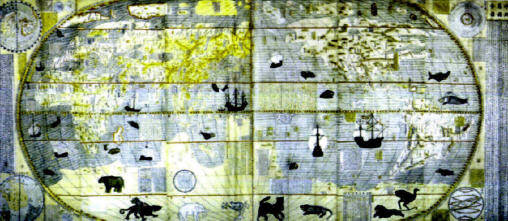 During Ming Emperor Shenzong's Wanli Era (AD 1573-1620), Europeans began to come into China in flocks.
First Portuguese ship arrived at Guangdong Province coastline in A.D. 1514.
There were a group of people called Da-xi-yang-ren (i.e., Atlantis people or Atlantic people) visiting China, and they claimed that Jesus Christ was born in Lu-de-ya (i.e., Palestine). At the same timeframe, an Italian by the name of Li-ma-dou (Matteo Ricci) arrived at Xiangshan-ao of Canton and then went on to the Chinese capital of Peking in approx A.D. 1581 and presented a map with five continents. Mattco Ricci (Mattco Ricci) stated that Jesus Christ was born in the second year of Han Emperor Aidi, i.e., 1 BC, which should be the second year of Aidi's second era of Yuanshou, and that it would be 1581 years till the then current year 1581 or the 9th year of Wanli Era. By the 29th year, i.e., A.D. 1601, Ricci's Christianity spread to Peking by presenting 'tributes' to Emperor Shenzong, and the missionaries claimed to be Atlantic people.
During Ming Emperor Shenzong's Wanli Era (AD 1573-1620), Europeans began to come into China in flocks.
First Portuguese ship arrived at Guangdong Province coastline in A.D. 1514.
There were a group of people called Da-xi-yang-ren (i.e., Atlantis people or Atlantic people) visiting China, and they claimed that Jesus Christ was born in Lu-de-ya (i.e., Palestine). At the same timeframe, an Italian by the name of Li-ma-dou (Matteo Ricci) arrived at Xiangshan-ao of Canton and then went on to the Chinese capital of Peking in approx A.D. 1581 and presented a map with five continents. Mattco Ricci (Mattco Ricci) stated that Jesus Christ was born in the second year of Han Emperor Aidi, i.e., 1 BC, which should be the second year of Aidi's second era of Yuanshou, and that it would be 1581 years till the then current year 1581 or the 9th year of Wanli Era. By the 29th year, i.e., A.D. 1601, Ricci's Christianity spread to Peking by presenting 'tributes' to Emperor Shenzong, and the missionaries claimed to be Atlantic people.
Protocol Ministry cited classics "Hui Dian" in saying that there was only Suo-li-guo, no Da-xi-yang-guo, that the Italians did not present tributes till 20 years later, and that the pictures of Jesus Christ and St Mary did not sound a reasonable religion. Protocol Ministry suggested that Ming Dynasty sent the Italians back to their country with some imperial bestowals, but emperor did not make any decree; Protocol Ministry then suggested that Italians be relocated to the mountains of Jiangxi Province instead of allowing them to stay on in the capital, but the emperor still refused to issue any decree. Later, Emperor Shenzong, for appreciating Ricci's long distance travel to China, offered guesthouse, special privileges and kind treatment. Ricci hence settled down in China till his death in April of 1609 and was buried to the west of Peking. After Ricci would be Pang-di-wo (?)
and Xiong-san-ba (P. Sabbathinus de Urisis) who brought solar calendar to China.
Another two missionaries, Wang-feng-su () and Yang-ma-ruo (), settled down in Nanking and converted tens of thousands of Chinese. A protocol ministry official, Xu Ruke, unhappy over the missionary's bragging about Italy, would propose to have the missionaries expelled. In A.D. 1616, another official, Yu Maoci, likened Christianity to White Lotus Society. Emperor Shenzong decreed to have Wang-feng-su and Pang-di-wo expelled to Guangdong Province for sailing back to Italy. But Emperor Shenzong's order was not enforced. Two years later, Pang-di-wo wrote a letter to the emperor stating that he had come with Ricci on this 90,000 li sea trip in the wish to see the glory of China, that they had been eating on Chinese stipends for 17 years, and that they were willing to leave for their home country once the wind changed direction. "Ming Shi" stated that Pang-di-wo's letter was not submitted to the emperor, and he changed his name and entered Nanking again for preaching Christianity.
During Emperor Chongzhen's reign, i.e., A.D. 1628-1644, Ming officials often called upon the Italians in Macao for teaching the skills of making and firing the cannons. In A.D. 1628, Protocol Ministry's "shang shu" [secretary] Xu Guangqi asked Luo-ya-gu (P. Jacobus Pho) and Tang-ruo-wang (Schall von Beu Jean Adam [original name Johan Adom Shall von Bell]) edit a Chinese version of solar calendar called "Emperor Chongzhen Calendar". Tang-ruo-wang was a German who had come to China around A.D. 1621 at the request of Ricci with the Roman Catholic Church.
With the help of Xu Guangqi (who had earlier translated geometry into Chinese with the help of Ricci) and Li Zizao, Christianity spread among the Chinese. "Ming Shi" stated that the missionaries were often scholars who were keen on preaching religion, only, and they were not after material gains or sexual exploitation of Chinese women, which was the Jesuits' belief that celibacy was the pathway to God. Famous among them would include Italians like Long-hua-min (P.Nicolao Longobardi), Bi-fang-ji, and Ai-ru-luue (Jules Aleni). Deng-yue-han (P.Joannes Terrenz) was from Ri-er-ma-ni-ya, Pang-di-wo was from Yi-xi-ba-ni-ya, and Yang-ma-ruo was from Bo-er-du-wa-er.
This time period also marked an introduction of Chinese history, literature and philosophy to the West as a result of cooperation between learned Chinese classics scholars and learned Jesuits. (The next wave of cross-translation would be led by scholar Yan Fu in late Manchu Qing Dynasty and Su Manshu in early Republican years.)
Tang-ruo-wang would be responsible for making several hundreds of cannons for defending Peking against Li Zicheng's peasant rebellion. However, Ming court collapsed after generals fled the capital and eunuchs surrendered the city.
After Manchu takeover, Tang-ruo-wang made a new calendar for regent Duo-er-gun in A.D. 1645, and later he was conferred a post as "shao qing" [junior imperial minister] at Tai-chang-shi [a government ministry].
For his efforts at dissuading the regent from attempt at Manchu throne, Tang-ruo-wang was taken as "grandpa" by Manchu Emperor Shunzhi.
From A.D. 1651 to 1664, converted Chinese Christians numbered around 100000.
Tang-ruo-wang was said to have persuaded dowager empress Xiaozhuang-taihou into selecting Emperor Kangxi for the reason that Kangxi, after already going through chickenpox, would be immune to the disease all life long.
Tang-ruo-wang would later be persecuted by the four Manchu ministers who overpowered Emperor Kangxi till his gaining regency at adulthood.
During Manchu time period, Nan-huai-ren (Ferdinandus Verbiest), a Belgian, continued Tang-ruo-wang's work in China.
In A.D. 1668, Nan-huai-ren gained an upper hand over a Manchu Qing official Wu Mingxuan.
Emperor Kangxi, however, prohibited Catholics by imprisoning Charles Thomas Maillard de Tournon who arrived in China in A.D. 1705 with a pope order as to exclusion of Heaven, ancestors and Confucius among Christian converts.
American Robert Morrison arrived in China in A.D. 1807.
Ming China's War With Portuguese
Christopher Columbus discovered the New World in A.D. 1492, Portuguese navigator Diaz reached the Cape of Good Hope in 1486, and Portuguese navigator, Vasco da Gama, opened the sea route between Europe and India by way of the Cape of Good Hope in A.D. 1497.
Portugal was the first European power to invade Asia. Vasco da Gama reached Calcutta in 1497. Portuguese established two castles in India in 1501 and 1502. In A.D. 1510, they captured Goa of India; in A.D. 1511, they destroyed the kingdom of Malacca; and in A.D. 1514, they arrived in China, ultimately swindling Macao in A.D. 1553.
Portuguese, however, still had confusion about the identity of China as reported by the Jesuits throughout 16th century.
Aly Mazaheri, an ethnic Iranian and a French sinologist, in La Route De La Soie (1983), claimed stated that Portuguese governor in India dispatched Benoit Goez on an overland trip via Silk Road to verify that the Khitay was the same as China, which culminated in Benoit Goez's arrival in Suzhou [Gansu Prov] in A.D. 1604.
In A.D. 1514, i.e., 9th Year of Ming Emperor Wuzong's Zhengde Era, the first Portuguese ship arrived at Guangdong Province coastline.
This is disputable since 1514 was only the year when Pi-lei-si authorized the book Suma Oriental in which he described a port called Oquen (i.e., Haojing or Macao in English, subject to Xiangshan-xian county which was first established in A.D. 1386) and possibly derived his knowledge from Chinese merchants in Malacca.
Deng Kaisong's Land-Sea Ebb Of Macao stated that Portuguese merchant Jorge Alvares came to Dunmen (i.e., HK) of Dongguan-xian county for trading in spices in A.D. 1513. Jorge Alvares was forbidden from landing ashore; however, he managed to erect a stone slate bearing his name, and years later, he was buried besides this slate when he made a second visit and died of illness.
More ships came to China thereafter. In August of A.D. 1517, Fernas Peresd Andrade and Thomas Pirez, under a purported king's order, led eight warships to the Pearl River Mouth after two month voyage. Andrade's three ships sailed along the river to Canton where the two guys requested for a meeting with Ming Dynasty's governor-general in the name of Falangji [Folangji] Statelet. Local officials, unable to find the name of 'Folangji' in the list of alien statelets, requested with the emperor for disposal of Portuguese 'tributes'. Andrade was recorded to have inspected the city defence of Canton and then returned to Dunmen (today's HK), while Pirez stayed on in Canton.
An Arab who worked for the Portuguese as an interpreter would bribe Ming official Wu Tingju for approval to go to Peking. Deng Kaisong stated that this interpreter, named "Huo-zhe-a-san", claimed that he was a representative of Malacca king who was asked to escort the Portuguese to China; however, Deng Kaisong pointed out that the dethroned Malacca king later dispatched an emissary to China, exposed the interpreter as a fake, and caused the guy into confessing that he was a Chinese in origin.
Ming Dynasty ordered that Fernas Peresd Andrade return to Malacca while Thomas Pirez, i.e., Portuguese emissary, was retained in Canton for three years. Ming Emperor Wuzong (Zhu Houzhao, r. 1506-1521) made a southern tour. The same interpreter bribed an eunuch by the name of Jiang Bin to have Thomas Pirez meet with the emperor.
In January 1520, Pirez departed Canton for the north, and in May, arrived in Nanking where he met Ming emperor.
Thomas Pirez was said to have taught Emperor Wuzong the language of Portuguese.
They returned to Peking together.
In A.D. 1520, Ming Dynasty verified that Folangji (i.e., Portugal) had incorporated the land of Malacca that was considered a Ming vassal. Two Ming yu shi (censor) officials, Qiu Daorong and He Ao, submitted proposal for expelling the Portuguese from the coast for Portuguese's bombarding Canton in prior year and disturbing markets of Canton. By 1521, Emperor Shizong (Zhu Houcong, r 1522-1566) issued the decree of expulsion right after enthronement. The interpreter was executed after confessing that he was a Chinese in origin, while Thomas Pirez was driven to Guangdong coast from Peking. Thomas Pirez, who was retained as a hostage for Portuguese restoration of Malacca kingdom, later died in prison in Guangdong Province.
Around this timeframe, Fernas Peresd Andrade's brother, Simao Addrade, led 4 ships to the river mouth where he erected fences, built houses, set up barracks, and lay a stone monument. Records from Xin'an-xian County stated that the Portuguese encircled the land of Dunmen, manufactured weapons, occupied islands, robbed ships, and killed Chinese. Some descriptions claimed that Portuguese, being cannibals, even ate little children for food. Further, Simao Addrade intercepted merchant ships sailing in and out of the Perl River and abducted young people and children.
Simao Addrade slipped away after Chinese resisted him. Meantime, in A.D. 1521, Portugal Governor for Malacca dispatched Diego Calvo to Canton for replacing Simao Addrade, with shiploads of sandalwood and pepper.
However, Ming official Wang[1] Hong led an attack at Diego Calvo. Calvo fled during a night. Portuguese then sent a fleet of 5 ships and 1000 men for another landing at Dunmen, and moreover built garrisons on Dayushan Island. Hence, the Sino-Portuguese War of 1521-1522 broke out.
Wang[1] Hong, with 50 ships, attacked Portuguese with fire in August.
During Sino-Portuguese War, Wang Hong took advantage of Portuguese ships' difficulty in maneuvering the change of direction and attacked the Portuguese with fire materials fully loaded in small Chinese ships.
Deng Kaisong stated that on the early morning of September 8th, 1521, Portuguese concentrated their staff onto three big ships for breaking through the encirclement. Portuguese slipped away by taking advantage of a big storm.
In July 1522, Portuguese fleet came to China again and encountered Chinese fleet at Xicaowan Bay of Xinhui county, stating that they only intended for trade. But the Chinese refused them and hence engaged in another navy battle. Chinese fleet captured ten Portuguese ships, killed 35...
Records from "Ming Emperor Shizong's Factual Chronicles", per scholars Yuan Bangjian and Yuan Guixiu, stated that Ke Rong (Ming general against Japanese pirates), Wang Yingsi (hundred household official), and Pan-ding (a so-called 'cultivated [converted] person' of alien origin) climbed up two Portuguese ships, killed about 35 Portuguese, captured 43 (42?) Portuguese alive (including Bie-du-lu and Shu-shi-li), caught about 10 men and women (captives of the Portuguese?), and caused numerous others fall off the ships and get drowned in the seas. There are some confusions as to the punctuation of the wording: Ming Emperor Shizong's Factual Chronicles stated that 3 other Portuguese ships came to the relief; ? burnt the two ships caught earlier; Wang Yingsi sacrificed his life; and the Portuguese fled.
In A.D. 1522, Ming China re-asserted the old policy of 'sea ban'.
Scholar Gu Yanwu recorded that tributes lessened as a result of sea ban; however, the order of Canton improved drastically.
Inside of Ming Dynasty appeared two factions, the con and pro as to 'sea ban' (with variant forms like 'seafaring ban' for the Chinese as well as 'iron export ban' for the Chinese merchants).
Deng Kaisong stated that in A.D. 1529, Governor Lin Fu for Guangdong-Guangxi provinces petitioned Ming court for re-opening Canton port.
Ming court decreed: 1) that the ports of Quanzhou of Fujian and Ningbo of Zhejiang be closed down, 2) that only Canton port be allowed to operate, 3) that foreign merchants must present the proof of their government's submission of tribute before they could trade, 4) that foreign merchants of each country could only sail to China at pre-designated interval of years, on one ship only, with maximum personnel capped at 100.
Over a dozen wharfs outside of Perl River, including Haojing (i.e., Macao), were utilized for customs inspection, with tariff set at 10%.
On those wharfs, foreign merchants built temporary residences that were sold to later-coming merchants in lieu of dismantling per Ming China's policy.
By A.D. 1535, Ming court loosened the ban, with a coastal official by the name of Huang Qing taking bribes from foreigners and moving the 'trading & ships governing office' to Haojingao (i.e., Macao) from Dianbai-xian county. Ming China's "trading & ships governing office" was originally located at Canton, moved to Dianbai county during Zhengde Era, and finally relocated to Macao by Huang Qing in 1535. Historians speculated that among Huang Qing's annual surrender of 20,000 units of gold as taxes could be Portuguese bribery.
After the defeat in Pearl River Mouth, the Portuguese sailed towards Fujian-Zhejiang coasts and colluded with Japanese pirates in engaging in "simultaneous commerce and piracy", killing coastal Chinese near Zhuangzhou of Fujian and Ningbo of Zhejiang. From 1547 to 1549, Ming Governor Zhu Wan, also the imperial commissioner for coastal defence of Fujian and Zhejiang provinces, launched three attacks at the Portuguese, wiping out Portuguese strongholds at Shuangyu (Ningbo, Zhejiang), and killed and captured over 239 Portuguese at Wuyu (Zhuangzhou, Fujian) and Zoumaxi (Shaoan, Fujian). Portuguese records stated that as many as 800 Portuguese might have died and 37 ships burnt during the war with Governor Zhu Wan for Zhejiang Province.
Portuguese, who were driven off from Zhejiang and Fujian coasts, returned to Guangdong coastline.
Portuguese, taking advantage of the new policy, returned to Shangchuandao Island of Xinhui (i.e., today's Taishan county) and Langbai of Xiangshan county.
Portuguese were able to trade by disguising in the names of other countries.
They bribed local officials for rights to trading, and dwelled on Langbaiao Island as temporary residency. In A.D. 1553, Portuguese, claiming that their merchandise was wet due to a storm, requested with Deputy Coastal Magistrate Wang Bo for landing at Macao to dry their goods. (Deputy Coastal Magistrate had 1000 soldiers under him.) Once they landed, they refused to leave, and moreover built houses and castles. Yuan Jianbang and Yuan Guixiu, in their book Brief History of Macao (Zhongliu Publishing House, HK, 1988 edition), cited Huang Wenkuan's research that Portuguese had bribed Wang Bo by means of a secret treaty, with clauses such as i) surrendering 1000 taels of silver to Wang Bo per year (500 tales of silver per Deng Kaisong), and ii) changing the name to Pu-tao-li-a (Portugal) from Fo-lang-ji (Falangji), and etc.
Deng Kaisong affirmed the bribe by listing Portuguese commander Souza's 1556 letter to King Louis. Souza claimed that he had deliberately prohibited Portuguese from going ashore to transact business in A.D. 1552 and thereafter reached a peace deal with "Hai [sea] Tau [magistrate]" (i.e., Ming China's coast magistrate).
By 1557, Portuguese built permanent houses in Macao. Though, Portuguese did not get to trade in lands other than the coast.
In A.D. 1563, Macau possessed 4100 Chinese, 900 Portuguese and Malaysian/Blacks.
Ming Court did not check out the fake name of Portugal till A.D. 1565, by which time Ming court once again declined Portugal's "tributes".
Deng Kaisong stated that Ming China did not check out the bribe till deputy coastal magistrate succeeded Wang Bo in A.D. 1571 and thereafter surrendered 500 taels of silver to the imperial coffer.
Deng Kaisong further cited Montalto de Jesus's A.D. 1573 account in describing the formality of Portuguese surrendering 500 taels as well as the deputy coastal magistrate acknowledgement of taking in the silver on behalf of the emperor.
In Macau, Portuguese men first interbred with women they brought over from Africa, India and Malaysia, and then found the supply of Chinese women.
Portuguese Lease Of Macau
In A.D. 1574, Ming China built a customs gate, i.e., "guan zha", a pass that was dismantled by the Portuguese in A.D. 1874.
Portuguese were controlled by Ming China by means of opening up the gate once every five days for supply of fresh water, vegetables and food.
By 1582, Ming China signed an official treaty with Portugal in regards to lease of Macao, stipulating that Portuguese surrender 500 taels of silver to Xiangshan County per year. (Portuguese additionally might have surrendered 20,000? taels of silver in taxation.)
500 taels continued till A.D. 1849 when Governor A-ma-le declared a discontinuation of rent payment by taking advantage of China's defeat in the British opium war.
Though Portugal fell under Spanish rule in A.D. 1581, Portuguese, for securing the monopolization of the trade route between Manila and China, deliberately arrested and expelled Spanish in 1590, and in 1598-1599, respectively.
Around 1599, a Spanish warship from Manila shipwrecked near Macao, with 120 survivors. Spanish commander dispatched two columns of soldiers for relief with Canton and Macau. Two soldiers were taken into custody by the Portuguese in Macao.
Chinese sold the Spanish a ship. Spanish, while going to Macao for fetching the two soldiers, were driven away by the Portuguese governor.
On September 27th, 1601, two Dutch warships, after a defeat in Indonesia, intruded into Macao. Portuguese, whose ally Spain had suffered defeat in the alliance of Britain and Netherlands, forcefully arrested and executed 17 Dutch who came ashore via a landing vessel. Only a Dutch merchant and two juniors were set free in Malacca later.
In retaliation, Dutch raided Portuguese merchant ships in the Straits of Malacca, and in March 1603, abducted Portuguese Ship Ka-te-li-na (Katalina?) and auctioned off Chinese silk products at a worth of 3,4000,000 Dutch dollars in Amsterdam.
Dutch, later in the year, near Macao, raided a Portuguese ship destined for Japan and burnt the ship after removing commodities valued at 1,400,000 Dutch dollars.
Piracy continued till a peace treaty between Netherlands and Spain was signed in 1609.
Some officials inside Ming China still objected to Portugal's leasing Macao, especially after the Portuguese built a church on Qingzhoushan Mountain across the waters in 1606.
Ming China, at Macao, instituted officials in charge of customs inspection, pirate defence, coastline patrolling, imperial decree office and etc.
In 1608, Xiangshan County magistrate Cai Shanji stipulated ten rules for managing Macao and in 1611 submitted the ten rule regulation to Governor Zhang Minggang.
In A.D. 1613, Guo Shangbin rebuked Portuguese in front of the emperor. Xiangshan County magistrate Zhang Dayou petitioned for destructing the church.
In A.D. 1613, Governor Zhang Minggang dispatched deputy coastal magistrate Yu Anxing to Macao where Yu Anxing and Xiangshan county magistrate Dan Qiyuan forced the Portuguese into surrendering 123 Japanese for deportation to Japan.
Yu Anxing and Dan Qiyuan stipulated the "sea ban regulations" in the areas of i) Portuguese custody of Japanese, ii) human smuggling of Chinese, iii) prohibition of adopting Chinese children, iv) no loitering of foreign ships outside of Macao port, v) no under-table trading, and vi) hold on building new residencies in Macao. The "sea ban regulations" were carved on a stone monument.
In A.D. 1614, Ming China established a garrison ("can jiang fu") at Yongbo with 1000 soldiers.
Later in 1621, official Feng Conglong dispatched people for destroying the church with no resistance from Portuguese. Ming China moved the garrison closer to Macao, from Yongbo to Qianshan, i.e., Qianshan-zai Garrison, and increased staff to 700 field soldiers and 1200 navy soldiers as well as allocated altogether 50 patrolling ships across all wharfs of Macao.
In A.D. 1618, Coastal Magistrate Yu Anxing stipulated 5 rules for managing Portuguese under the system of 'bao jia' (i.e., collective household supervision and punishment), and inscribed the rules on stone monument.
By A.D. 1621, Macau population reached 25,000.
On April 10th 1622, 15 Dutch warships, with a total of 2000 soldiers, departed Batavia for attacking Macao.
On May 29th, two herald Dutch ships and two herald British ships began attacking ships near Macao as well as bombarded Macao.
In Macao, only 50 musketeers and 100 civilians were available for defense while another 30 soldiers were invited to Ming China's capital of Peking 5 months ago for exhibiting Macao-made heavy cannons.
On June 21st, Dutch main fleet arrived.
On the night of 22nd, three Dutch soldiers stealthily got ashore for checking out the geography.
On the afternoon of 23rd, Dutch commander bombarded Macao and shouted that "by tomorrow all those Portuguese above age 20 would be headless".
On 24th, Macao battery, i.e., Citadel of Sao Paulo do Monte, destroyed one Dutch warship.
At about 7:00 am, 800 Dutch soldiers landed on the beach via 37 small vessels.
After Dutch commander was shot in the stomach, a colonel was in charge of beachhead landing. With 40 dead, Dutch landed on the shore. However, Portuguese cannons soon hit the Dutch powder bins.
Portuguese defeated Dutch on all fronts, and then together with Black slaves, charged into Dutch, killed the Dutch interim commander, and drove remnants into the sea.
More than half of 600 Dutch column were killed or drowned. Portuguese records stated that they had killed about 600 Dutch with a casualty of 10 deaths. June 24th would become Macao's city holiday.
In A.D. 1623, Portuguese, on the pretext of defending against the Dutch, built a high-rise city wall with batteries on it, with a perimeter extending 1380 'zhang' (equiv to 10 Chinese feet).
Though Deputy Coastal Magistrate Xu Ruke destroyed the wall in A.D. 1624-1625, the remaining base had become a dividing line between Macao and Xiangshan County, till A.D. 1849.
During the first half of 19th century, Portuguese traded heavily with Japan as well as interbred with Japanese women. When Japan persecuted Catholics, they kicked out Japanese women who lived with Portuguese men. Batches of Japanese women as well as Japanese Catholics fled to asylum in Macau.
Portuguese found supply of Chinese women again when Manchu took over control of China and drove lots of refugees into Macau.
By A.D. 1640, population reached 40,000, among whom Chinese numbered 20,000 and Portuguese numbered 6000.
In A.D. 1635, British, who had assisted Portuguese in shipping copper and metals to Goa one year ago but were refused entry into Macao, would dispatch 6 warships to Macao for trading with China.
When British moored near Macao on June 25th 1637, Portuguese refused entry to the British. British, however, sailed along Perl River towards Canton, bombarded Humen Battery when Chinese tried to stop them, and did not retreat till Chinese allowed some of their goods transferred to Canton.
Thereafter, British, by pretending to provide cover to Portuguese in passage through Dutch-blockaded Malacca Strait, gained access to Macao. Only after Chinese intervention did the British leave Macao.
British would not return to Macao till A.D. March 18th, 1802, about 160 years later, after Britain grabbed Goa from Portugal in A.D. 1801 by taking advantage of the Portuguese defeat in Portuguese-Franco War.
Portuguese & the Manchu Qing Dynasty
Manchu China at first adopted the "beachland clearance" policy, forcing Chinese off the coastal areas of Guangdong, Fujian and Zhejiang for sake of cutting off Zheng Chenggong's anti-Manchu forces.
Portuguese, together with Chinese, were relocated away from Macau and Qianshan.
Deng Kaisong stated that Portuguese were spared this "beach-land clearance" relocation.
In A.D. 1664, Manchu China reinforced Qianshan-zai Garrison with 2000 soldiers and dispatched two minister-level officials to Macao for an inspection.
Du Zhen (gongbu shangshu) and Shi Zhu (neige xueshi), under the escort of Guangdong Prov's governor-general and governor, toured Macao for two days, enjoying Portuguese reception of salvo of cannon blasting from two batteries.
In A.D. 1668, Manchu Qing Emperor Kangxi decreed that Portuguese could retain Macau as their dwelling place.
 Emperor Kangxi did not revoke the "sea ban" till A.D. 1684, and coastal people returned to their home villages by then.
Emperor Kangxi, in A.D. 1685, opened four coastal cities for international trade, which included Macau, Zhuangzhou, Ningbo and Yuntaishan.
In A.D. 1695, Manchu China established Guangdong Provincial Customs Office for supervising the Macao tariff office.
The locally-born mingle Portuguese, who possessed relatively less rights and prestige versus Lisbon-dispatched Portuguese, at one time joined the 1688-1704 Timor War, which caused a big population drop due to war-related deaths.
Emperor Kangxi did not revoke the "sea ban" till A.D. 1684, and coastal people returned to their home villages by then.
Emperor Kangxi, in A.D. 1685, opened four coastal cities for international trade, which included Macau, Zhuangzhou, Ningbo and Yuntaishan.
In A.D. 1695, Manchu China established Guangdong Provincial Customs Office for supervising the Macao tariff office.
The locally-born mingle Portuguese, who possessed relatively less rights and prestige versus Lisbon-dispatched Portuguese, at one time joined the 1688-1704 Timor War, which caused a big population drop due to war-related deaths.
Manchu China inherited the old management system.
Manchu Governor-general Fa Hai inspected Macao in A.D. 1717. Governor Ye Yuxun inspected Macao in 1724 and proposed that Manchu prohibited non-Portuguese foreigners from dwelling in Macau.
Guangzhou, i.e., Canton, was where the customs office was. Hence, foreigners must go to Canton to transact business and then return to Macau for the night stay. Macau became merely a residential quarter for the Chinese merchants and Portuguese who worked in Canton [i.e., Guangzhou].
In A.D. 1725, Manchu prohibited non-Portuguese foreigners from dwelling in Macau.
In A.D. 1731, Xiangshan County established panels for managing Macao and moved the deputy county magistrate office to Qianshanzhai.
In 1743, Xiangshan County moved the office southward to Wangxiachun, next to Macao. Wangxiachun, located to the south of the "Guan Zha Men" Pass, would be the place where the Americans compelled Manchu into signing the "Wangxia Treaty" in the aftermath of the British Opium War.
In 1743, Portuguese had killed some Chinese merchant.
Also in this year, Manchu China elevated the office by relocating Zhaoqing-fu to Qianshan-zai Garrison, to be in charge of Xiangshan-xian deputy county magistrate but directly under the supervision of Canton provincial governor office.
County magistrate for Dongguan, i.e., Yin Guangren, boarded two British warships that were blown to Siziyang Sea near Humen Battery and discovered that 299 Spanish were taken as prisoners by British.
Yin Guangren forced the British into releasing the Spanish to Portuguese before providing logistical supply to the British.
In A.D. 1743, Macau population recovered to 5,500, among whom 3,500 were Portuguese.
In A.D. 1744, Manchu China reinforced control over Macao by stipulating seven regulations, with a prohibition of Chinese from entering Macao.
In A.D. 1746, Portuguese King issued a decree that non-Portuguese westerners could not stay or do business in Macau, causing those westerners relocate to Canton. Xiangshan county magistrate reported this event to provincial official, and Manchu court notified Macau authority that those Westerners who received Manchu approval could dwell in Macau.
In 1747, new Portuguese governor, Antony, tried to provoke conflicts with China for his dissatisfaction over the seven regulations. Antony was recalled to Goa for his bad relations with China.
In 1748, Portuguese had killed two Chinese, Li Tingfu & Jian Yaer. Under the pressure of Manchu magistrate for Macao (i.e., Tong Zhi) Zhang Rulin, Portuguese culprit was punished via an exile to Timor. However, Zhang Rulin was revoked his post for not extraditing the Portuguese for punishment.
In 1749, 12 new rules in regards to transfer of criminals, exile of criminals, human smuggling, Black slaves, Christianity preaching and overseas voyage etc., were made and inscribed on the stone by Macao magistrate Zhang Rulin and Xiangshan-xian county magistrate Bao Yu.
Deng Kaisong stated that the Portuguese deliberately omitted the clause in regards to Christianity preaching in the Portuguese version.
In 1751, Yin Guangren and Zhang Rulin published a book entitled Short Introduction To Macao.
In A.D. 1784, Zhang Daoyuan, i.e., Manchu magistrate for Canton prefecture, inspected Macao for intervention over the matter of Chinese injuries in the hands of Portuguese.
Beginning from September 1802, British laid their eyes on Macau.
In A.D. 1807, Governor-general Wu Xiongguang inspected Macao as to opium trade.
In July 1808, six British warships, under admiral Drury, forcefully entered Macau. On August 2nd, British took over several batteries. Manchu Governor-general for Guangdong-Guangxi, Wu Xiongguang, demanded that British withdraw from Macau. When British refused, Governor-general Wu Xiongguang ordered a cessation of trade with Britain. Admiral Drury led soldiers to Thirteen Foreign Firms Guesthouse and demanded a talk with Wu Xiongguang.
British compromised by exiting in Dec, while Wu Xiongguang was deprived of his post by Manchu court.
Replacing Wu Xiongguang would be Bai-ling who inspected Macao with Governor for Guangdong Province.
Scholar Yan Qinghuang [Yen Ching-hwang] of HK University stated that among Macau's population of 4049 in A.D. 1810, White men counted 1172 while White women counted 1846.
Governor-general Song-yun visited Macao in A.D. 1811.
Governor-general Ruan Yuan visited Macao in A.D. 1818.
In A.D. 1821, Ruan Yuan arrested Macao opium vendor Ye Hengshu.
By A.D. 1830, Macau possessed 4,049 Portuguese (White men 1202 and White women 2149) and 30,000 Chinese.
Yen Ching-hwang concluded that the abnormally high number of White women in Macau exemplified the fact of prostitution in Macau.
Portuguese, Dutch, Spanish, & British Entanglements Over Macao
Though Portugal fell under Spanish rule in A.D. 1581, Portuguese, for securing the monopolization of the trade route between Manila and China, deliberately arrested and expelled Spanish in 1590, and in 1598-1599, respectively.
Around 1599, a Spanish warship from Manila shipwrecked near Macao, with 120 survivors. Spanish commander dispatched two columns of soldiers for relief with Canton and Macau. Two Spanish soldiers were taken into custody by the Portuguese in Macao.
Chinese sold the Spanish a ship. Spanish, while going to Macao for fetching the two soldiers, were driven away by the Portuguese governor.
On September 27th, 1601, two Dutch warships, after a defeat in Indonesia, intruded into Macao. Portuguese, whose ally Spain had suffered defeat in the alliance of Britain and Netherlands, forcefully arrested 17 Dutch who came ashore via a landing vessel.
Portuguese executed 17 Dutch by claiming they were pirates.
Only a Dutch merchant and two juniors were set free in Malacca later.
In retaliation, Dutch raided Portuguese merchant ships in the Straits of Malacca, and in March 1603, abducted Portuguese Ship Ka-te-li-na (Katalina?) and auctioned off Chinese silk products at a worth of 3,4000,000 Dutch dollars in Amsterdam.
Dutch, later in the year, near Macao, raided a Portuguese ship destined for Japan and burnt the ship after removing commodities valued at 1,400,000 Dutch dollars.
Piracy continued till a peace treaty between Netherlands and Spain was signed in 1609.
On April 10th 1622, 15 Dutch warships, with a total of 2000 soldiers, departed Batavia for attacking Macao.
On May 29th, two herald Dutch ships and two herald British ships began attacking ships near Macao as well as bombarded Macao.
In Macao, only 50 musketeers and 100 civilians were available for defense while another 30 soldiers were invited to Ming China's capital of Peking 5 months ago for exhibiting Macao-made heavy cannons.
On June 21st, Dutch main fleet arrived.
On the night of 22nd, three Dutch soldiers stealthily got ashore for checking out the geography.
On the afternoon of 23rd, Dutch commander bombarded Macao and shouted that by tomorrow all those Portuguese above age 20 would be headless.
On 24th, Macao battery destroyed one Dutch warship.
At about 7:00 am, 800 Dutch soldiers landed on the beach via 37 small vessels.
After Dutch commander was shot in the stomach, a colonel was in charge of beachhead landing. With 40 dead, Dutch landed on the shore. However, Portuguese cannons soon hit the Dutch powder bins.
Portuguese defeated Dutch on all fronts, and then together with Black slaves, charged into Dutch, killed the Dutch interim commander, and drove remnants into the sea.
More than half of 600 Dutch column were killed or drowned. Portuguese recorded stated that they had killed about 600 Dutch with a casualty of 10 deaths. June 24th would become Macao's city holiday.
In A.D. 1635, British, who had assisted Portuguese in shipping copper and metals to Goa one year ago but were refused entry into Macao, would dispatch 6 warships to Macao for trading with China.
When British moored near Macao on June 25th 1637, Portuguese refused the British entry. British, however, sailed along Perl River towards Canton, bombarded Humen Battery when Chinese tried to stop them, and did not retreat till Chinese allowed some of their goods transferred to Canton.
Thereafter, British, by pretending to provide cover to Portuguese in passage through Dutch-blockaded Malacca Strait, gained access to Macao. Only after Chinese intervention did the British leave Macao.
British would not return to Macao till A.D. March 18th, 1802, about 160 years later, after Britain grabbed Goa from Portugal by taking advantage of the Portuguese defeat in Portuguese-Franco War.
1644-1684
1685-1840
TO BE CONTINUED !!!
Portuguese & Trafficking Of Coolies & Sex Slaves
Macau already became a spot of crime syndicates with prostitution, human trafficking, opium, and etc. Macau was to replace Amoy as the next launching pad for trafficking Chinese coolie.
Prof Yen Ching-hwang had authored a book entitled Chinese Coolies Overseas & Manchu Officials [i.e., Coolies and Mandarins] and pointed out that British Opium War of A.D. 1839-1842 had coincided with the prosperity of slave-nature trafficking of Chinese coolies overseas, a trade that was first started by the Dutch in 17th century.
Yen Ching-hwang stated that Xiamen (Amoy), a port which had replaced historical Quanzhou, would become the first port to see Chinese coolies sold overseas.
(Departing from Amoy would be: French shipment of Chinese coolies to Liu-ni-wang Island in A.D. 1845 and Spanish shipment of 800 Chinese coolies to Cuba in 1847. At Amoy, 5 British firms and 1 German firm, often with governmental consuls acting as company executives, had sold 8,281 coolies from A.D. 1847 to 1853, and as much as 50,000 could have been abducted each year from the port of Amoy. In A.D. 1847, British governor claimed that British revenues from Amoy was 72,000 pounds, about 3 times the combined value from all other ports, a manifestation of slave trade in trafficking Chinese coolies to British Guana, Trinidad and Jamaica.
Peru passed its law for importing Chinese coolies in November 1849, and Australia imported 2,666 Chinese coolies from A.D. 1848 to 1852.
French controlled islands and Spaniard-controlled Philippines all imported Chinese coolies from Amoy.
Peru, Pacific Islands, West Indies, North Africa, South Africa, and Australia had all engaged in Chinese coolie slave trade.
Chinese coolies built the Panama Railway.
America was no exception. Chinese coolies built the American railroads and highways across Western American territories. (http://memory.loc.gov/ammem/award99/cubhtml/cicTitles12.html contained a dossier of files on "The Chinese in California, 1850-1925".
See cprr.org/Museum/Fusang.html for Chinese Railroad Men working as coolies in America under ferocious White men's racial discrimination. Also see SAN LUIS OBISPO'S CHINESE for the context of the 1882 Chinese Exclusion Act.
The U.S. government, after acquiring Hawaii in summer of A.D. 1898 and Philippines in December 1898, applied "Chinese Exclusion Act" to Chinese on the two islands, and further, President Theodore Roosevelt signed into law to have "Chinese Exclusion Act" applied throughout US-controlled islands and territories over the world, making the Chinese the lowest caste, a fundamental cause in Chinese suffering in ethnic cleansing which occurred in Philippines, Indonesia and Malaysia etc.
In 1943, CHINESE EXCLUSION ACT was repealed by the American Congress, with China awarded a yearly immigration quota of 102 persons.)
Rioting in Amoy first began in A.D. 1847 against the British and by November 24th, British marines shot dead 10-12 Chinese. British stationed warships near Gulangyu for protecting its interests extracted from the A.D. 1842 Nanking Treaty.)
Yen Ching-hwang stated that Macau would take the place of Amoy beginning from November 1852 when riots broke out as a result of Chinese attacking a British smuggler for protecting a henchman.
British and American merchants then turned to Shantou for trafficking coolie. In A.D. 1855, angry Chinese took custody of an American captain for his trafficking activity. As a result of British authority's desire for maintaining a good face in HK, smugglers flocked to Macau instead.
More, In Macau, Portuguese specialized in selling Chinese women and Chinese girls
throughout the latter half of 19th century. (One Jesuit's 1563 account stated that he had taught Christianity to two batches of 450 and 200 Chinese women slaves before they were sold to Portuguese merchants and officials in Goa as sex slaves; Archbishop at Goa, Dom Ignacis De Sama Terez, stated in 1725 that Chinese women slaves were often cruelly killed by the wives of Portuguese merchants and officials; and in A.D. 1855, A British ship, Englewood, carried over 40 Chinese girls around age 7-8 [abducted from Ningbo area] for transfer to a Portuguese called Martinez in Amoy port.
Portuguese did not get their greedy ambition realized till after Manchu China lost the A.D. 1839-1842 Sino-British Opium War.
In A.D. 1838, British Navy Commander Frederick Maitland sailed two warships to Macau for protecting opium trade. When Manchu officials refused to see him, Frederick Maitland demonstrated his warships at Cuanbiyang Sea. Frederick Maitland sailed away when Manchu official deployed defence army.
In A.D. 1839, imperial commissioner Lin Zexu toured Macau for banning opium trading and made a census check which showed that Macau had 727 households or 5612 Portuguese as well as 1772 households or 7033 Chinese. Lin Zexu was accorded the 19 gun salutes by Portuguese batteries when he visited Macao with Governor-general Deng Tingzhen on September 3rd, 1839.
After China lost the Opium War, Macau became a lawless portal for illegal human & drug trafficking.
In A.D. 1846, newcomer Portuguese Governor F de Amarabl began to encroach on Chinese territories.
Beginning from A.D. 1849, Portugal no longer paid China rent for Macau.
From A.D. 1847 to 1875, 99,149 out of 150,000 Chinese coolies sold to Cuba departed from Macau.
Human trafficking firms increased to 300 in A.D. 1872 from 5 in A.D. 1856.
Yen Ching-hwang estimated that about 15000 to 20000 coolies were sold overseas each year from A.D. 1856 to 1964, till the trade was banned in A.D. 1874.
Zheng Guanying (1842-1922), a reformist, once blasted over 200 coolie trafficking firms of Macau, accusing Portuguese government of making one dollar for tax and giving two dollars for bribery with each Chinese coolie abducted and sold overseas. Zheng Guanying pointed out that numerous coolies had died of illness and bad treatment and that some coolies had deliberately burned the ship in the attempt of dying with the ship rather than be sold to remote lands.
Zheng Guanying authored 14 volumes of admonition book entitled Sheng Shi Wei Yan (i.e., precarious talks in a prosperous world), in which he advocated parliament, military apparatus and industry-commerce development for China.
Later in the century, both British in HK and Manchu government interfered in Macau's coolie trafficking. Though coolie trading stopped, Macau population remained at about 70,000 to 80,000 by 1920.
In A.D. 1887, Portuguese obtained the right of permanent residency in Macau from Manchu government. Macau did not get to return to China till December 20th 1999.
The 1924 Canton Foreign Merchant Corps Rebellion would lead to an influx of people to Macau to as much as 200,000. When Canton and HK were sacked by Japanese in 1939 and 1941 consecutively, Macau population reached 400,000.
Further details would be seen at macau.htm
Ming China's War With Dutch
Li Ao, a critic of the KMT government on Taiwan, echoed Li Hongzhang's comments that Manchu China's confrontation with red-hair ghosts (i.e., British) was an extraordinary event not foreseen by China for 3000 years and that Britain, with its military might and fire-power, was an enemy China could not match during the course of past 1000 years.
Wrong ! The cousins of red-hair ghosts, i.e., the Dutch, had arrived at Java in 1595 and the Chinese coast in A.D. 1602. From A.D. 1603 to 1624, Ming China exerted hundreds of ships and thousands of soldiers to repelling the Dutch from Chinese coasts and the Pescadores Islands. Often, numerous small Ming Ships encircled big Dutch warships for sake of winning the fight. Ming China mobilized a huge field army for landing on the Penghu Islands (i.e., Pescadores) and after fierce fighting, forced the Dutch into withdrawal. Dozens of years later, Zheng Chenggong, son of pirate-turned Ming General Zheng Zhilong, would first adopt the approach of "defeating the aliens by means of aliens' weapons". Zheng Chenggong, whose merchant fleet had sailed to the four corners of the seas, actively purchased weapons, firearms and cannons from the Dutch. In February 1662, Zheng Chenggong successfully expelled from Taiwan Island the Dutch who, having colonized the island from 1624 to 1662, had latinized the aboriginals' language to the extent that the aboriginals no longer remembered their own native language.
In the ensuing hundreds of years, Manchu Qing China had been mostly occupied with "pleasure-seeking and literature-decoration", a 1916 comment by Japanese Prime Minister in regards to Yuan Shi-kai's death and its influence on the rise and fall of the Republic Of China. (The worst thing is that today's decadent Communist China is not any better
than the Manchurian rulers. Red alerts !!)
In A.D. 1595, the Dutch, under command of Cornelius Houtman, arrived at Java.
In A.D. 1602, Dutch ships appeared near the Chinese coasts and met resistance by the Portuguese. Portuguese vilified the Dutch in front of the Chinese and hence the Dutch failed to get ashore.
In A.D. 1602, the Dutch, for competing with the Portuguese, formed the "Dutch East India Company", a company chartered for monopolized trade as well as managing newly acquired colonies.
In A.D. 1603, the Dutch first attacked the Portuguese in Macau, but got repelled after sinking several Portuguese ships. The Dutch tried to wrestle Macao from the Portuguese, but were defeated by a joint Chinese-Portuguese army.
In A.D. 1604, the Dutch fleet, under Captain Van Warwijk, planned to attack Macau for a second time. Having encountered a hurricane, Van Warwijk led three ships to Penghu (Pescadores) in August of the year. Penghu was abandoned by Ming army already. Dutch built a castle on the island. Van Warwijk dispatched an interpreter (Lin Yue) to Fujian Province, requesting for exchange of commerce, but Lin Yue was arrested by the Chinese. Further, Ming Dynasty dispatched Shen Yourong for quelling the Dutch disturbance.
Shen Yourong first ordered a ban of trade with Dutch, making the Dutch feel difficult to advance or to retreat.
Shen Yourong led 20 ships and the Dutch interpreter (Lin Yue) to Penghu for expelling the Dutch.
Shen Yourong personally went to see Van Warwijk, explained the system of Ming China, rebuked Van Warwijk for his bribes of 30,000 gold nuggets, and stated that he had no authorization to commence trading with Dutch. Shen Yourong released the interpreter and exchanged gifts with Van Warwijk. Shen Yourong also informed Van Warwijk that a Chinese traitor, Pan Xiu, who guided Dutch to Penghu, would be penalized by execution. On December 15th of 1604, Van Warwijk left Penghu Island.
In A.D. 1619, Dutch took over Jakarta of Indonesia and named it "Batavia".
By the end of 1620, Dutch intercepted ships between Macau and Malacca, acquiring information that Spanish government intended to occupy a Taiwan port to counter the alliance of Netherlands and Britain. Dutch Governor at Batavia, January Pierszoon Coen, decided to attack Macau again and take over Penghu and Taiwan ahead of Spain.
On April 10th, 1024, the Dutch, under commander Cornelis Reyeresn, sailed in 8 ships to attack Macau. On June 24th, Dutch arrived at Macau, bombarded Fort Saint Francois for five days, and landed 800 sailors ashore. But the Dutch were defeated, with a loss of 136 men in addition to 126 men wounded.
Withdrawing from Macau, on July 11th 1622, Dutch landed on Penghu Islands which had altogether 100-200 people. Using a Chinese fisherman as a guide, Dutch commander Cornelis Reyeresn led two ships to Anping Harbor of Taiwan Island on July 26th for detecting the quality of Anping harbor as a port; they returned to Penghu on July 30th.
Anping Harbor of Taiwan had been frequented by Japanese and Chinese merchant ships several times a year, with Japanese buying deer skin from the aboriginals and the Chinese selling silk products to Japanese.
Dutch thought Anping Harbor was difficult to defend against outsider attacks and decided to build castle on Makung of Penghu Islands on August 2nd. On August 7th, a Dutch, by the name of Van Meldert, led three ships to Fujian and asked a seaside or garrison official (shou bei) Wang Mengxiong relay a letter to Fujian Governor (hu tai) Shang Zhouzuo for exchange of commerce. On September 29th, Wang Mengxiong sailed to Penghu and gave Shang Zhouzuo's reply to Dutch commander, asking the Dutch vacate the Penghu Island and informing the Dutch of Ming China's refusal to trade with the Netherlands. On October 17th of 1622, Van Nieuweroode led 422 soldiers and 8 ships against the Amoy coastline for sake of forcing a trade. Five ships arrived at Amoy area and Dutch destroyed 26 Ming navy ships and 80 merchant and fishing vessels. One Dutch ship, with 18 men, was captured by Chinese. On October 26th, Dutch fleet attacked 6 Ming Ships around Amoy's Gulang-yu Island and burnt merchant houses on the island. On December 7th, Van Nieuweroode, leaving four ships at Amoy, left for the Penghu Island with Chinese captives and lootings.
The Dutch built a fortress in Makung and harassed Portuguese vessels on the Taiwan Strait. On the Penghu Island, the Dutch castle had a square side of 56.5 meters and it was equipped with over 20 cannons. Dutch had about 10 warships around the island.
On February 23rd of 1623, Ming Chinese official stationed at Batavia proposed to the Dutch that Ming China would be willing to commence trading with the Netherlands should the Dutch vacate the Penghu Island (Pescadores). Ming China softened its stance by informing the Dutch that they could retreat to Taiwan from Pescadores.
From June 5th to June 13th of 1623, typhoon destroyed some walls of the fort. Dutch raided the Fujian coast and abducted 1150 Chinese labor for rebuilding the fort. Among 1150 Chinese, 571 died of hard labor and bad nutrition, and another 486 died of illness on board the ship for Batavia. "Ming Shi" recorded that Dutch captured 600 Chinese fishing vessels during the time period. Penghu-xian County records recorded that altogether 1300 people were abducted by the Dutch;
On July 23rd, 1623, Commandeur Christiaan Francx's relief fleet of one big ship and four small ships arrived at the Penghu Island. On October 28th, Christiaan Francx led 4 ships to Amoy for trade talk. On November 18th, Ming official tricked Christiaan Francx onto the shore and captured some of the Dutch. "Ming Shi" recorded that 60 Dutch, including Christiaan Francx, were decapitated. At night, shou bei Wang Mengxiong led 10 ships, disguised as fishing vessels, for a fire attack at two Dutch ships, and burnt one ship. The second Dutch ship fled to the two other ships in the outer sea, and they left for Penghu Island on December 7th.
The Ming government issued a decree in September 1623 banning all Dutch ships from approaching southeast coast of China. In January 1624, Ming forces, under Fujian Governor (xun hu) Nan Juyi, attacked the Dutch on Penghu Island, and after eight months, the Dutch agreed to withdrawing from Pescadores in exchange for retreat to the Taiwan Island.
Nan Juyi recruited soldiers from Quanzhou area and purchased ships. On February 20th of 1624 (Jan 2nd per lunar calendar), Nan Juyi ordered that Wang Mengxiong attacked the Dutch on Pescadores. Wang Mengxiong intruded into Zhenhai-gang port of the Pescadores, and fought the Dutch and built the stone wall defence side by side, with casualties on both sides. Wang Mengxiong forced the Dutch into Fengkui-cheng castle.
Nan Juyi also ordered that du si (colonel equivalent) Gu Sizhong lead an army on an attack at Penghu-zhen town on the Pescadores. From late May to early June, Nan Juyi personally sailed to the island and supervised two Ming circuit district governors in launching a third attack at the Dutch. On July 13th, Nan Juyi ordered that navy general Sun Guozhen lead Liu Yinglong and Hong Jiyuan for an attack at the Dutch fleet near the Chinese sea goddess monastery.
On July 29th, Nan Juyi landed on the island and arranged for both land and sea offensives. On the island, Ming army cut off the water supply to the Dutch. On August 3rd of 1624, Dutch commander Marten Sonk arrived at the island with relief army. 850 Dutch soliders were retrieved from Taiwan. Meanwhile, Ming army swelled to 10,000 and 200 ships from the original force of 4000 men and 150 ships.
Dutch dispatched a negotiator for peace talk with zong bing Yu Zigao (i.e., son of Yu Dayou). Dutch was informed that Ming China intended to evict the Dutch from the Pescadores only and that Dutch could go to Taiwan at will.
On August 18th, Ming armies launched a three-prong attack. On August 24th, the Dutch raised the white flag to show surrender. Beginning from August 26th, the Dutch began to dismantle the castle in accordance with Ming China's demands and finished demolition by September 10th. Thereafter, the Dutch sailed to Taiwan.
Ming China's war with the Dutch was extraordinary in that Ming Chinese exerted great sacrifice in fighting a rising European power with unprecedented fire power. Nan Juyi stated in his report that the Dutch ships were extremely big and could bombard the small Chinese ships to powder over 10 li distance.
In A.D. 1635, a Ming Dynasty minister, Heh Kai, submitted to Emperor Chongzhen a tactic for quelling the sea upheavals. Heh Kai mentioned the turmoil of Yuan Jin, Li Zhong, Yang Lu, Yang Ce, Zheng Zhilong, Li Kuiqi, Zhong Bin and Liu Xiang and recommended the destruction of the piracy base in Taiwan. Heh Kai stated that Taiwan, beyond Penghu Islands, could be reached within two days by sea travel if departing from Zhuangzhou and Quanzhou ports; that coastal people went to Taiwan for taking advantage of the benefits of fishing and salts; that some people, taking advantage of Ming's lack of military influence there, had gathered to be rebels and bandits; that the Dutch, now having built castles on the island, had colluded with the disobedient Chinese and made Taiwan into a big tribal country. Heh Kai proposed a 'sea ban' (blockade of the coastal areas) to cause the Dutch nowhere to trade or profit and the disobedient Chinese nowhere to make a living. Heh Kai stated that Ming could then launch a campaign against the Dutch on Taiwan after achieving successes from the blockade of the coastal areas.
TO BE CONTINUED !
Written by Ah Xiang
|
|
|
|
|
|
|
Sovereigns & Thearchs;
Xia-Shang-Zhou dynasties;
Zhou dynasty's vassalage lords;
Lu Principality lords;
Han dynasty's reign years
(Sexagenary year conversion table-2698B.C.-A.D.2018; 247B.C.-A.D.85)
|
|
The Sinitic Civilization - Book I is
available now on
iUniverse,
Barnes & Noble,
Amazon,
Google Play|Books
and
Nook.
The Sinitic Civilization - Book II is
available at
iUniverse,
Amazon and Barnes & Noble.
Check out the 2nd edition preface that realigned the Han dynasty's reign years strictly observing the Zhuanxu-li calendar of October of a prior lunar year to September of the following lunar year, and the 3rd edition introduction that had an overview of Sinitic China's divinatory history of 8000 years.
The 2nd edition preface had an overview of the epact adjustment of the quarter remainder calendars of the Qin and Han dynasties, and the 3rd edition introduction had an overview of Sinitic China's divinatory history of 8000 years.
The 2nd edition realigned the Han dynasty's reign years strictly observing the Zhuanxu-li calendar of October of a prior lunar year to September of the following lunar year.
Stayed tuned for Book III that is to cover the years of A.D. 86-1279, i.e., the Mongol conquest of China, that caused a loss of 80% of China's population and broke the Sinitic nation's spine.
Preview of annalistic histories of the Sui and Tang dynasties, the
Five Dynasties, and the two Soong dynasties
could be seen in
From the Khitans to the Jurchens & Mongols: A History of Barbarians in Triangle Wars and Quartet Conflicts
(The Barbarians' Tetralogy - Book III: available at iUniverse;
Google Play|Books;
Amazon;
B&N).
(A final update of the civilization series is scheduled for October of 2022, that would put back the table of the Lu Principality ruling lords' reign years, that was inadvertently dropped from Book I during the 2nd update.)
|
|
 Now, the Scourge-of-God-Tetralogy.
Book III of
The Barbarian Tetralogy, i.e., this webmaster's barbarism series, is released in October of 2022 by iUniverse. This barbarism series would be divided into four volumes covering the Huns, the Xianbei, the Turks, the Uygurs, the Khitans, the Tanguts, the Jurchens, the Mongols and the Manchus.
Book I of the tetralogy would extract the contents on the Huns from
The Sinitic Civilization-Book II,
which rectified the Han dynasty founder-emperor's war with the Huns on mount Baideng-shan to A.D. 201 in observance of the Qin-Han dynasties' Zhuanxu-li calendar.
Book II of the Tetralogy would cover the Turks and Uygurs.
And
Book IV would be about the Manchu conquest of China.
Now, the Scourge-of-God-Tetralogy.
Book III of
The Barbarian Tetralogy, i.e., this webmaster's barbarism series, is released in October of 2022 by iUniverse. This barbarism series would be divided into four volumes covering the Huns, the Xianbei, the Turks, the Uygurs, the Khitans, the Tanguts, the Jurchens, the Mongols and the Manchus.
Book I of the tetralogy would extract the contents on the Huns from
The Sinitic Civilization-Book II,
which rectified the Han dynasty founder-emperor's war with the Huns on mount Baideng-shan to A.D. 201 in observance of the Qin-Han dynasties' Zhuanxu-li calendar.
Book II of the Tetralogy would cover the Turks and Uygurs.
And
Book IV would be about the Manchu conquest of China.
From the Khitans to the Jurchens & Mongols: A History of Barbarians in Triangle Wars and Quartet Conflicts
, i.e., Book III of
the Scourge-of-God-Tetralogy,
focused on the Khitans, Jurchens and Mongols, with the missing one-year history of the Mongols' Central Asia campaigns rectified.
This webmaster, other than the contribution to the Sinology studies in rectifying the Huns' war to 201 B.C., and realigned the missing one-year history of the Mongol Central Asia war, had one more important accomplishment, i.e., the correction of one year error in the Zhou dynasty's interregnum (841-828 B.C. per Shi-ji/840-827 per Zhang Wenyu) in
The Sinitic Civilization-Book I, a cornerstone of China's dynastic history.
|
The Scourges of God: A Debunked History of the Barbarians (available at iUniverse|Google Play|Google Books|Amazon|B&N)
From the Khitans to the Jurchens & Mongols: A History of Barbarians in Triangle Wars and Quartet Conflicts
(The Barbarians' Tetralogy - Book III)
Epigraph,
Preface,
Introduction,
Table of Contents,
Afterword,
Bibliography,
References,
Index
|
|
|
|

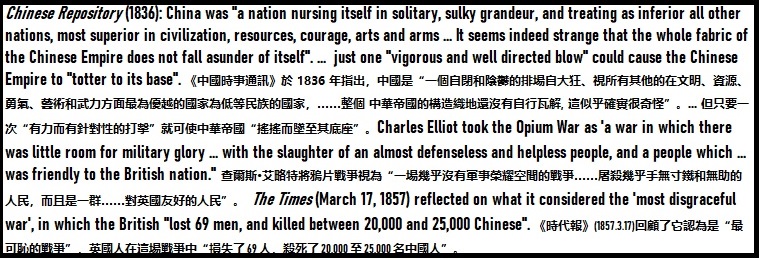
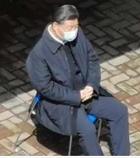








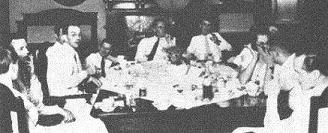
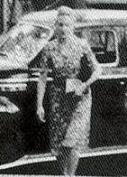
![Though, Anna Wang [Anneliese Martens], in her memoirs, expressed jealousy over Gong Peng by stating that the Anglo-American reporters had flattered the Chinese communists and the communist movement as a result of being entranced with the goldfish-eye'ed personal assistant of Zhou Enlai](GongPeng.jpg)








 Most of the records of the expeditions were destroyed by the Ming Dynasty officials. There was no definite explanation as to why Ming Dynasty started these explorations and why it suddenly stopped it. There had been a saying that the Yongle Emperor decided to send expeditions to the South Seas in search of his nephew emperor because he heard a rumor that the deposed emperor, whose body was never found in the Nanking's palace, might have fled to Southeast Asia as a monk. In this webmaster's opinion, the rumor factor could be one of many factors, while the other factor would be Ming China's new policy of seeking vassalage to rein in the neighbors, which was best exemplified in its attempts to have Japan acknowledge the suzerainty in A.D. 1371.
Taiwan scholars, using the Ming Dynasty court portrait of African giraffe, speculated that the Ming emperor ordered that Zheng Heh command a contingent to Africa in A.D. 1414 in search of an ancient noble animal called 'qi lin' (i.e., Giraffe).
Scholar Luo Xianglin provided a splendid explanation as to the cause of Ming China's launching the seafaring trips to the "Western Seas": Ming Emperor Chengzu, after hearing of the threat of invasion from Central Asia, intended to contain Timurlane by seeking an alliance with the Arab nations under the pretext of searching for the rumored Emperor Huidi in Southeast Asia.
Ming Emperor Taizu's emissary to Timur, i.e., Fu An, was detained in Central Asia.
Timur was recorded to have made some special arrangement for the Chinese emissary to inspect his domain so that China would be daunted by his military might.
Upon hearing of the war between Ming Emperor Huidi and Ming Emperor Chengzu, Timur organized an army of 200,000 for an attempted invasion of China.
Ming Emperor Chengzu ordered that garrison general Song Sheng prepare for defence in the desert area in today's eastern Chinese Turkestan while Zheng Heh be dispatched to the Persian Gulf, Red Sea and Indian Ocean.
Most of the records of the expeditions were destroyed by the Ming Dynasty officials. There was no definite explanation as to why Ming Dynasty started these explorations and why it suddenly stopped it. There had been a saying that the Yongle Emperor decided to send expeditions to the South Seas in search of his nephew emperor because he heard a rumor that the deposed emperor, whose body was never found in the Nanking's palace, might have fled to Southeast Asia as a monk. In this webmaster's opinion, the rumor factor could be one of many factors, while the other factor would be Ming China's new policy of seeking vassalage to rein in the neighbors, which was best exemplified in its attempts to have Japan acknowledge the suzerainty in A.D. 1371.
Taiwan scholars, using the Ming Dynasty court portrait of African giraffe, speculated that the Ming emperor ordered that Zheng Heh command a contingent to Africa in A.D. 1414 in search of an ancient noble animal called 'qi lin' (i.e., Giraffe).
Scholar Luo Xianglin provided a splendid explanation as to the cause of Ming China's launching the seafaring trips to the "Western Seas": Ming Emperor Chengzu, after hearing of the threat of invasion from Central Asia, intended to contain Timurlane by seeking an alliance with the Arab nations under the pretext of searching for the rumored Emperor Huidi in Southeast Asia.
Ming Emperor Taizu's emissary to Timur, i.e., Fu An, was detained in Central Asia.
Timur was recorded to have made some special arrangement for the Chinese emissary to inspect his domain so that China would be daunted by his military might.
Upon hearing of the war between Ming Emperor Huidi and Ming Emperor Chengzu, Timur organized an army of 200,000 for an attempted invasion of China.
Ming Emperor Chengzu ordered that garrison general Song Sheng prepare for defence in the desert area in today's eastern Chinese Turkestan while Zheng Heh be dispatched to the Persian Gulf, Red Sea and Indian Ocean.
